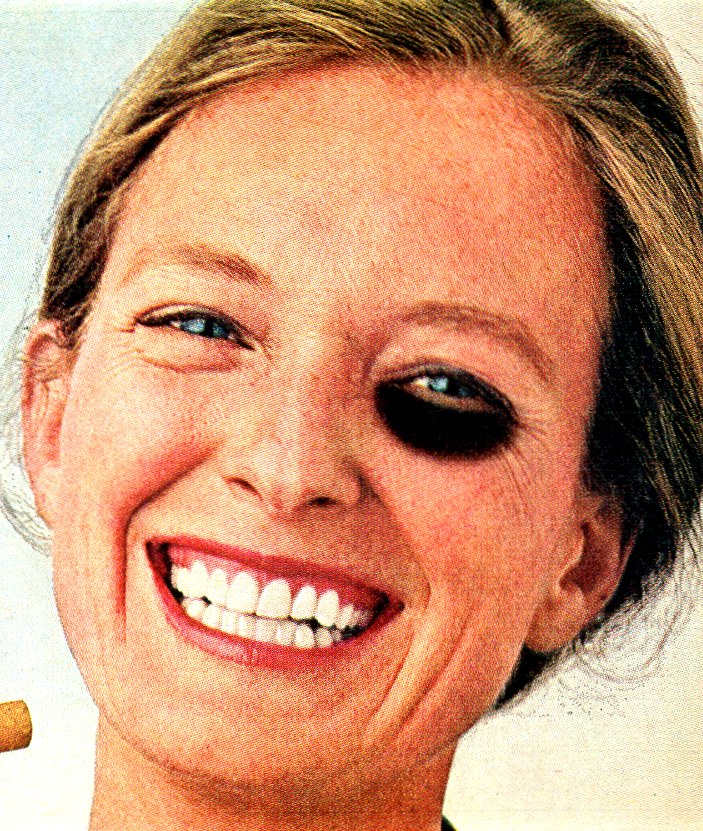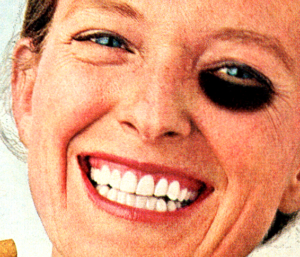 Everyone knows cigarettes kill; that’s what happens when they are used as directed. Cigarette smoking damages nearly every single organ in a person’s body. To downplay that inconvenient fact, tobacco companies spend huge amounts of money to convince people to either start smoking, or switch to their brand.
Everyone knows cigarettes kill; that’s what happens when they are used as directed. Cigarette smoking damages nearly every single organ in a person’s body. To downplay that inconvenient fact, tobacco companies spend huge amounts of money to convince people to either start smoking, or switch to their brand.
I inherited a huge collection of vintage Playboy magazines from the 1960s and 1970s, and they are like time capsules of a previous age. One of the most interesting things in them (and no, it’s not the women) are the cigarette ads.
Smoking was much more common back then, even after people realized it will eventually kill you. Cigarette smoking is an addiction, and one of the many health hazards that comes from smoking is the tar.
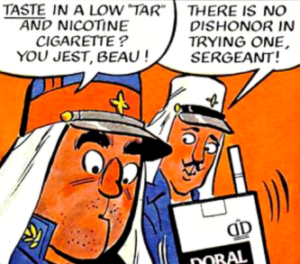
Tar is a sticky-brown substance that collects in the lungs when tobacco smoke is breathed in. It can stain fingers and teeth a yellow-brown color and contains cancer-causing chemicals. It also increases the risk of lung diseases, such as emphysema and chronic obstructive pulmonary disease.
In one year the average pack-a-day cigarette smoker inhales an entire quart of tar directly into his or her lungs. This is what that looks like.
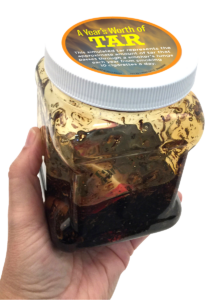
There are no words adequate enough to describe how disgusting this is. You can actually buy jars like this to give smokers a powerful incentive to quit. [Source: Health Edco]
Cigarette ads were constantly comparing themselves against each other with claims of low “tar”, because of their miraculous filters., which improved the taste, even though smoking deadens the taste buds. The ads would have you believe that the reason people smoked was not because they were addicted, but because their cigarettes tasted so good.
So much has been written about the Marlboro Man; these ad campaigns are for lesser-known cigarette brands and the approaches they took to compete.
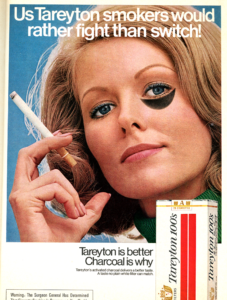 Tareyton
Tareyton
Tareyton had a frankly baffling ad campaign that ran for years, showcasing both men and women with black eyes: Us Tareyton smokers would rather fight than switch!
Who is punching out people for refusing to switch cigarette brands?!
The women in these ads are especially disturbing; they have been victims of an attack, punched in the face, for refusing to switch cigarette brands. And here they are, confidently smoking their Tareyton, almost proud of the black eye. These ads trivialize violence against women big time, in order to sell cigarettes.
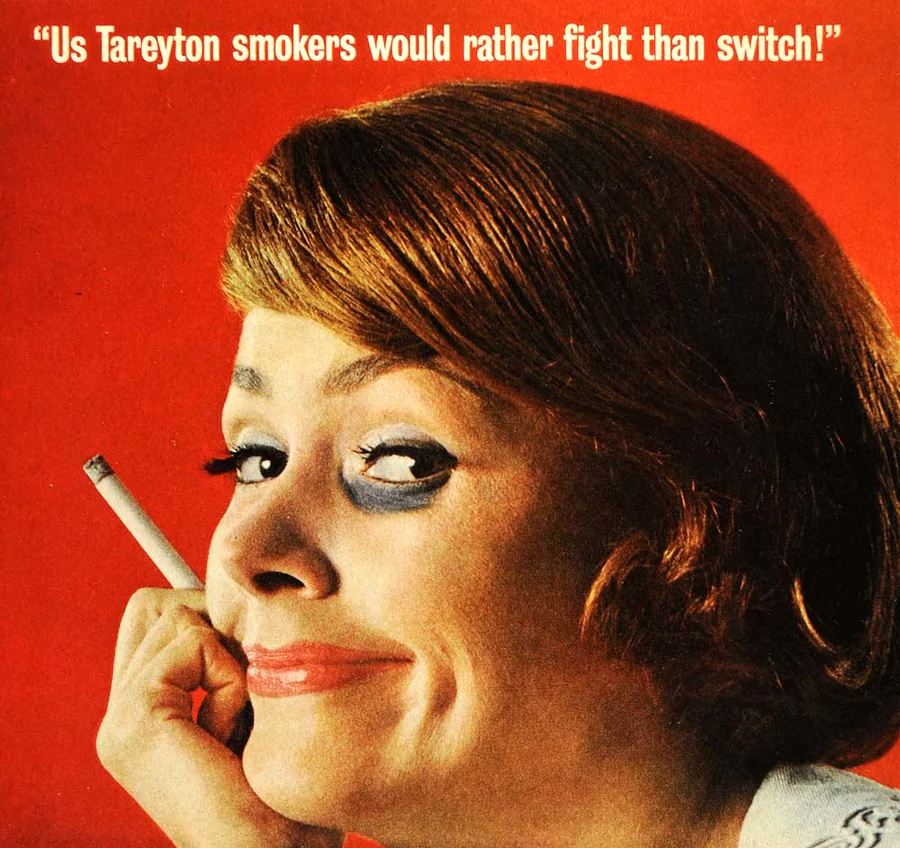
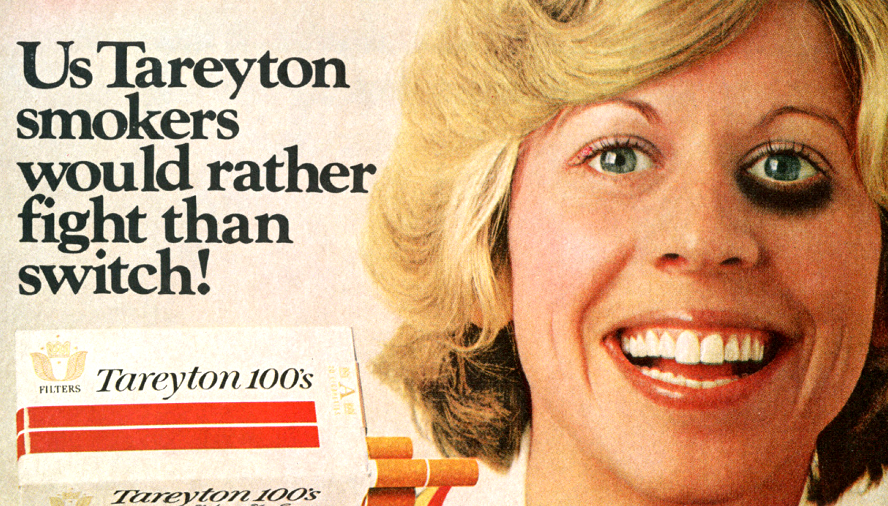

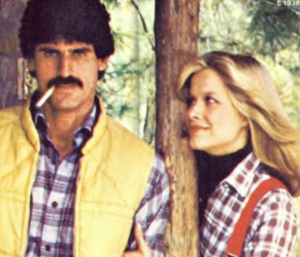 Camel’s “The Turk” – Before the way cool cartoon Joe Camel ad campaign in the 1980s, Camel had a variety of long running ad campaigns, such as I’d Walk A Mile For A Camel, and The Turk. The Turk was an intense, vaguely Middle-Eastern-looking man of action, always with a woman or two looking longingly at him. We were meant to aspire to the Turk’s level of epic coolness.
Camel’s “The Turk” – Before the way cool cartoon Joe Camel ad campaign in the 1980s, Camel had a variety of long running ad campaigns, such as I’d Walk A Mile For A Camel, and The Turk. The Turk was an intense, vaguely Middle-Eastern-looking man of action, always with a woman or two looking longingly at him. We were meant to aspire to the Turk’s level of epic coolness.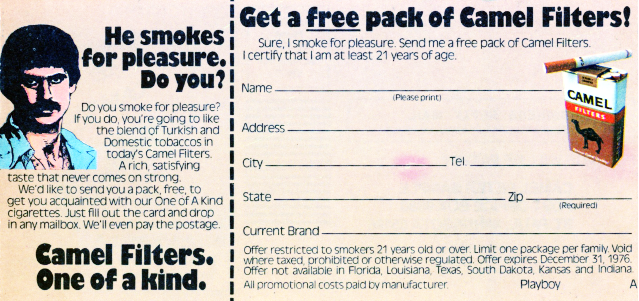
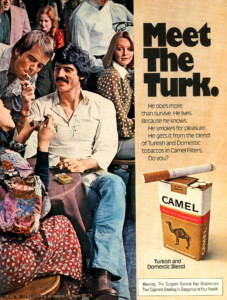
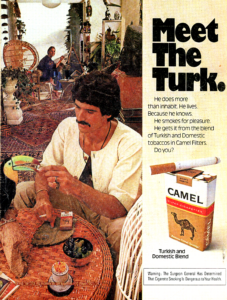
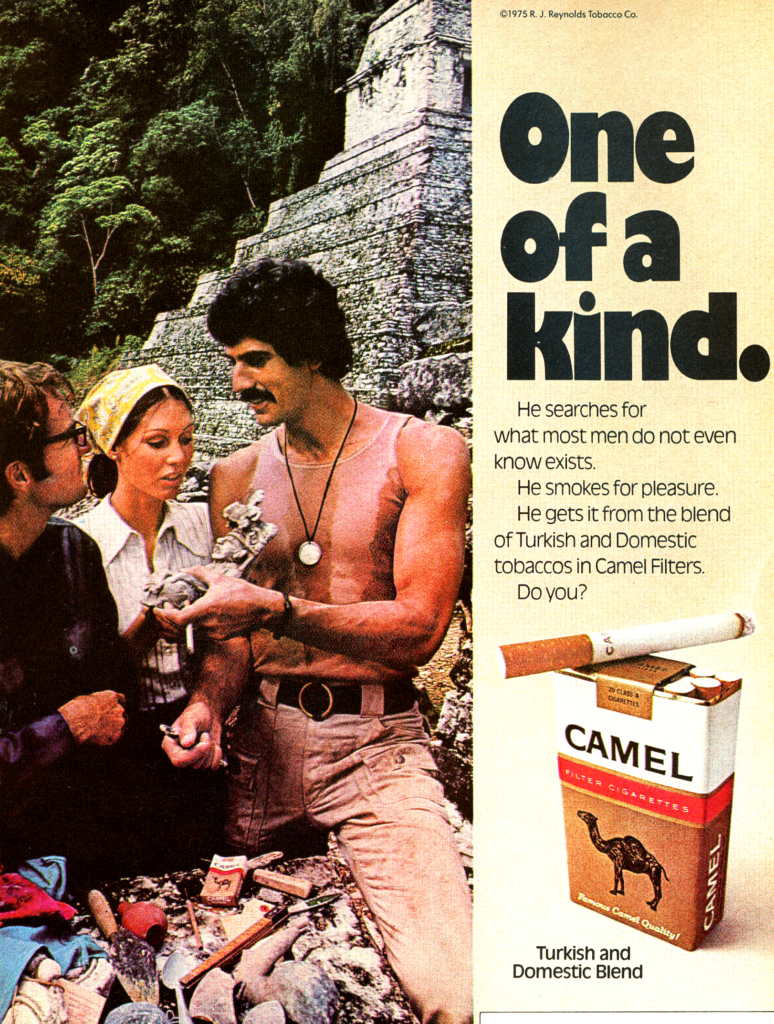

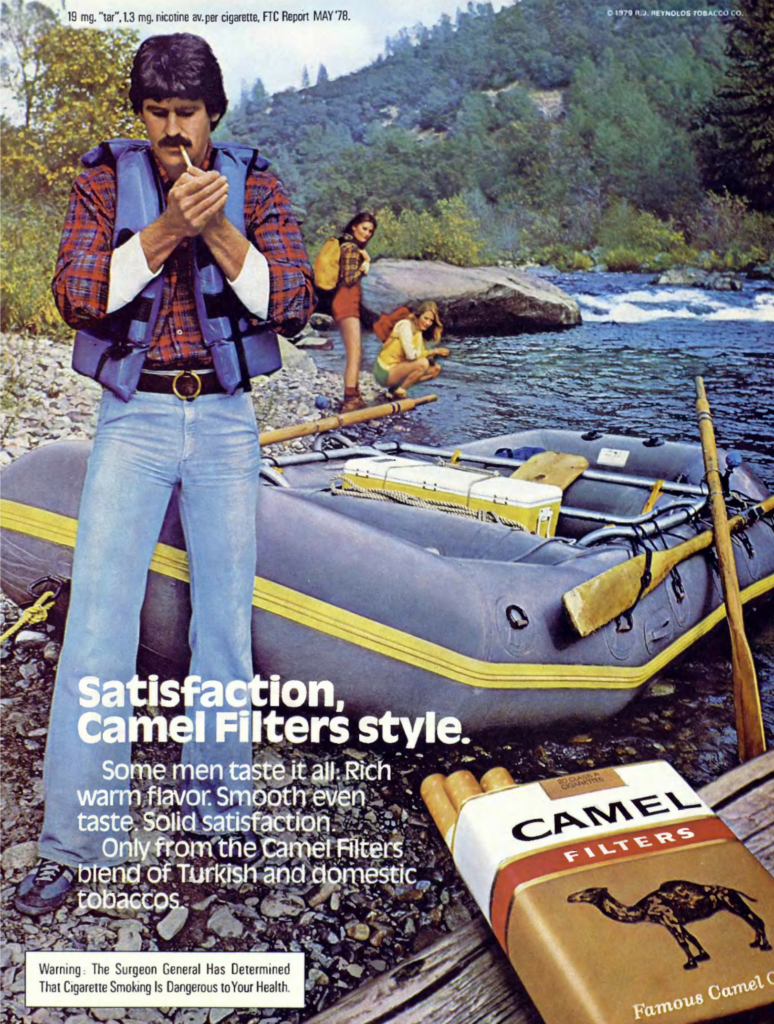

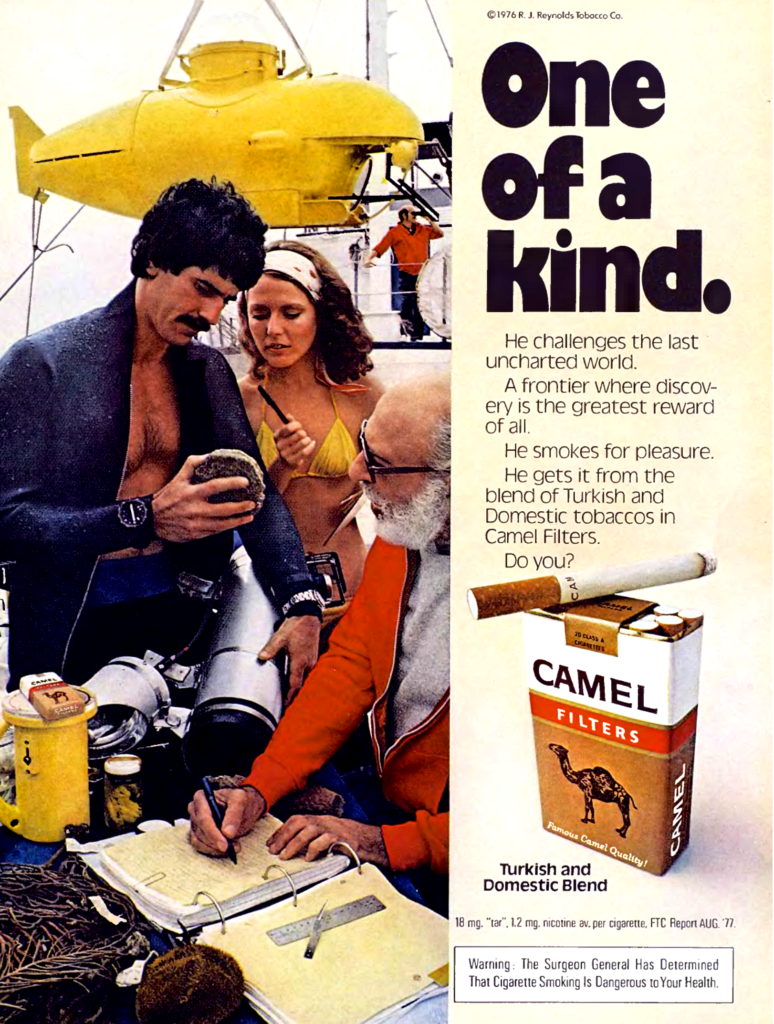
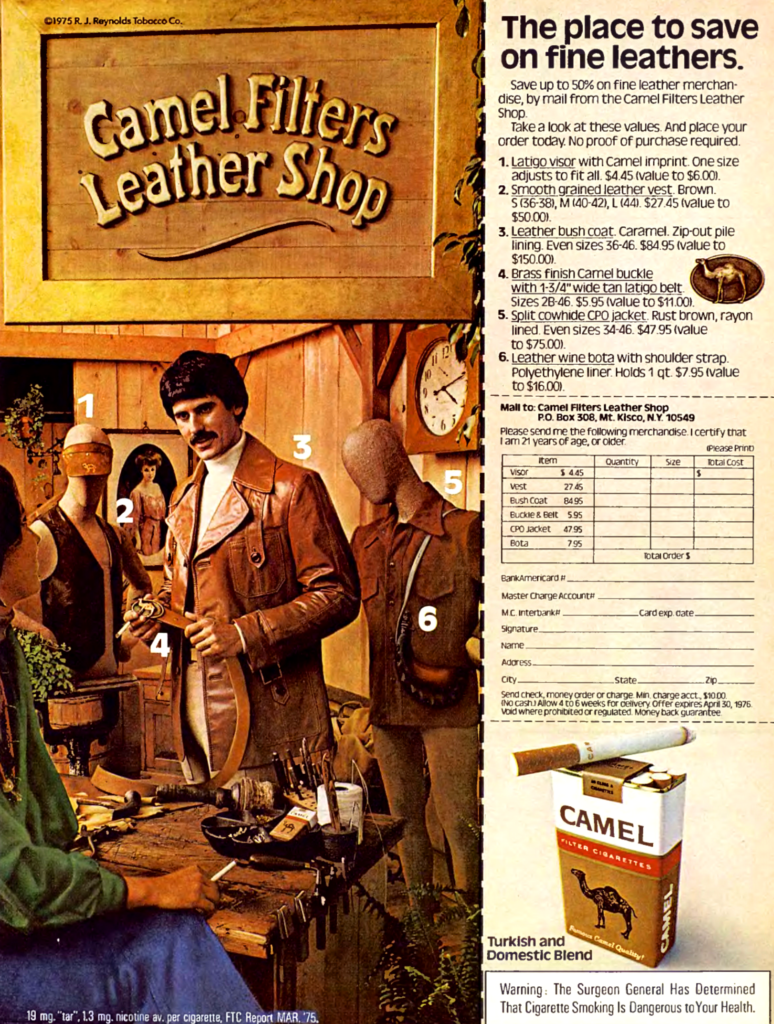
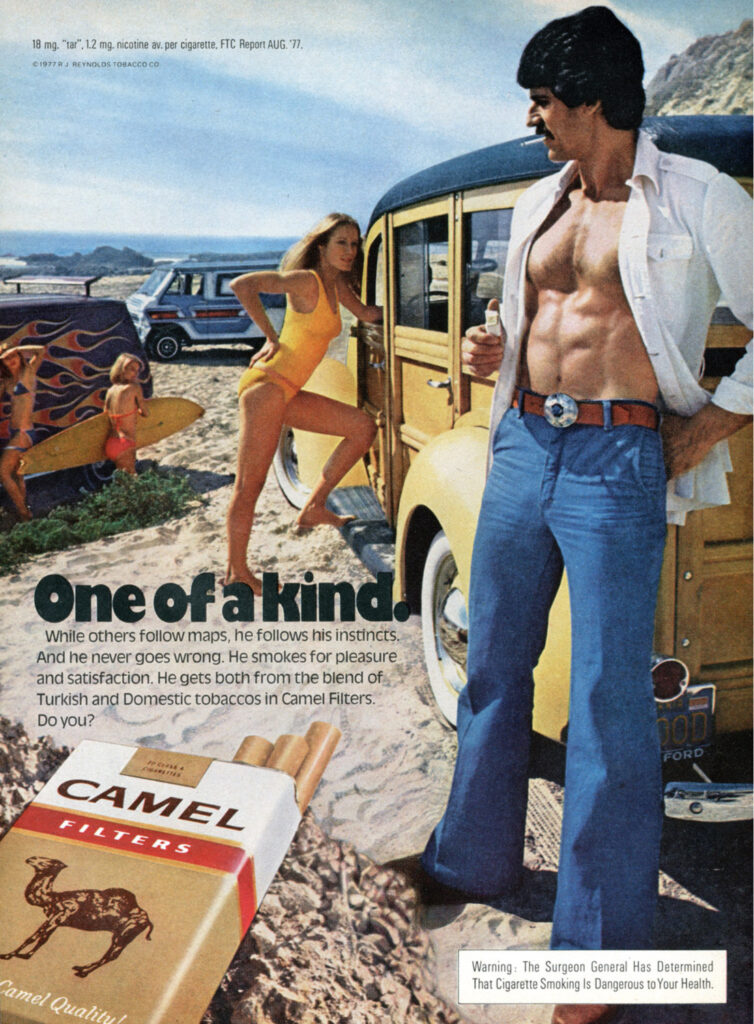

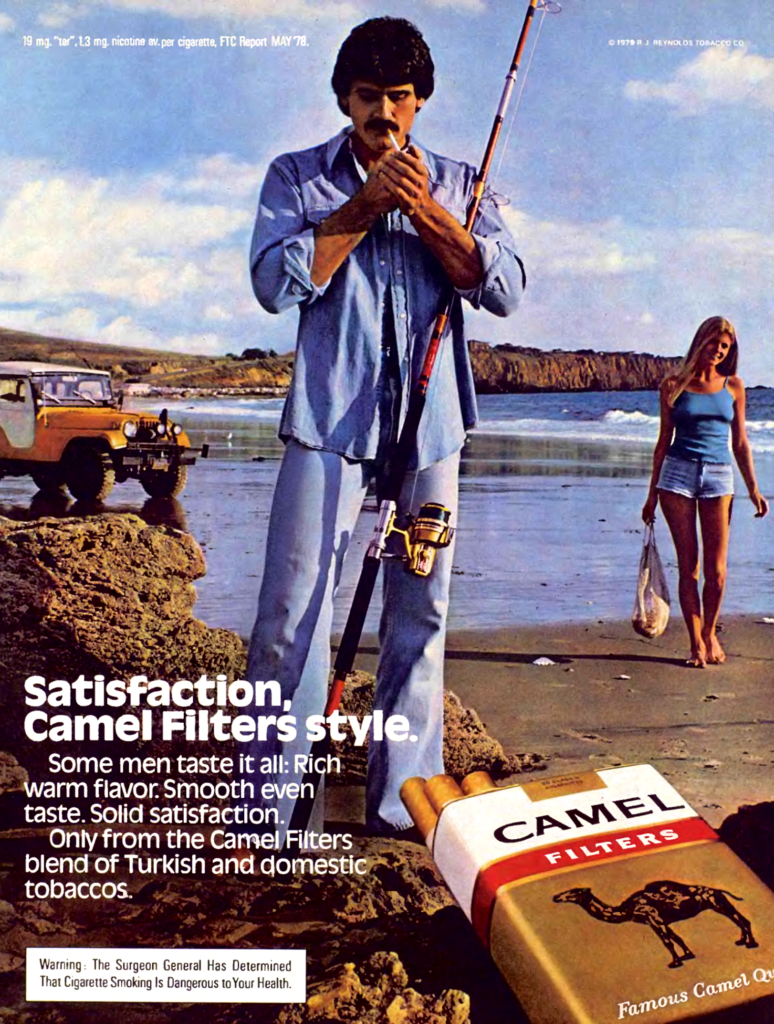
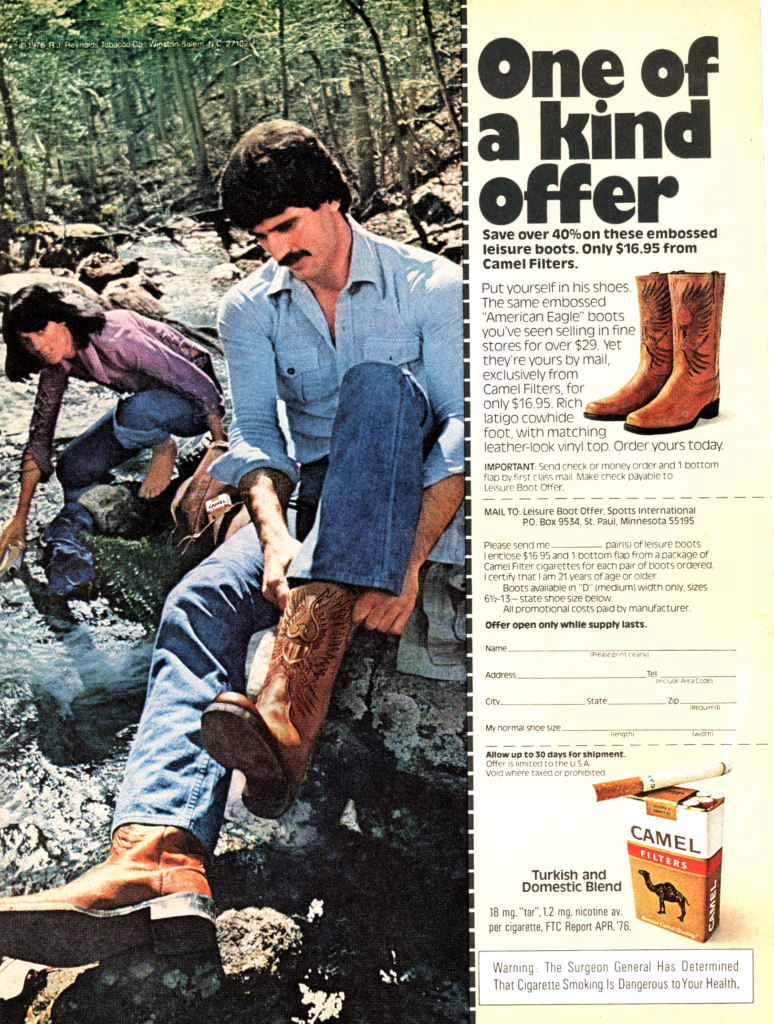
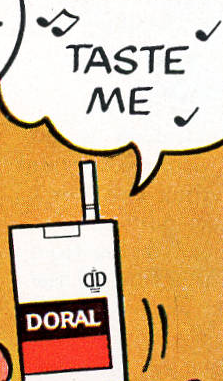
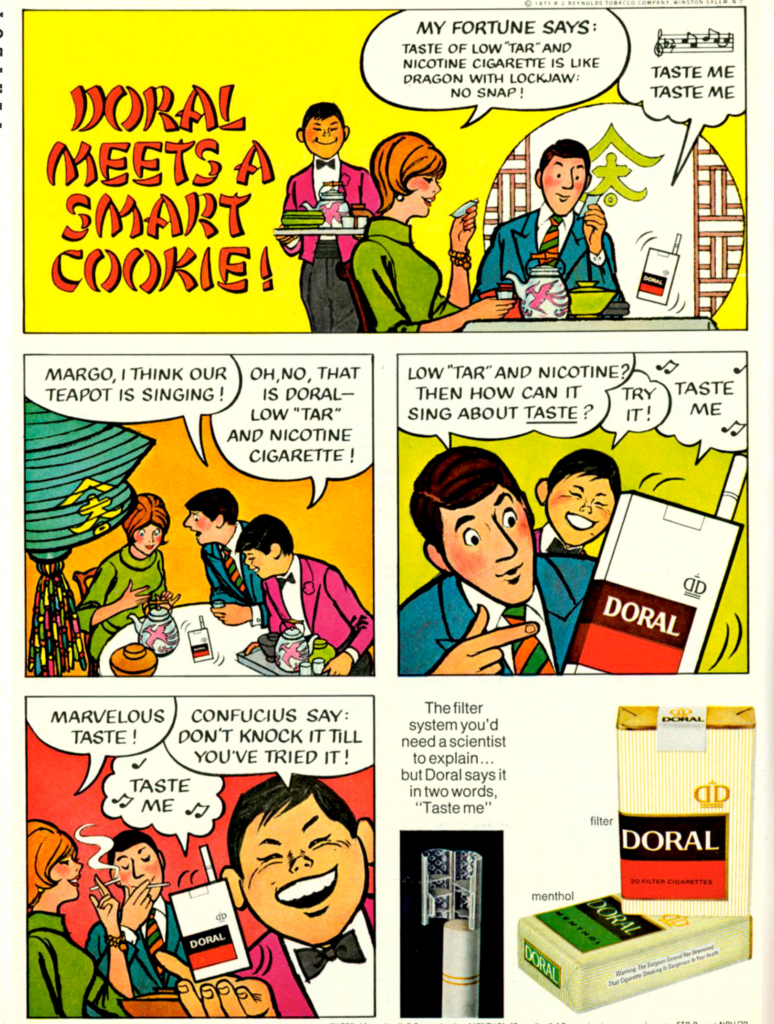

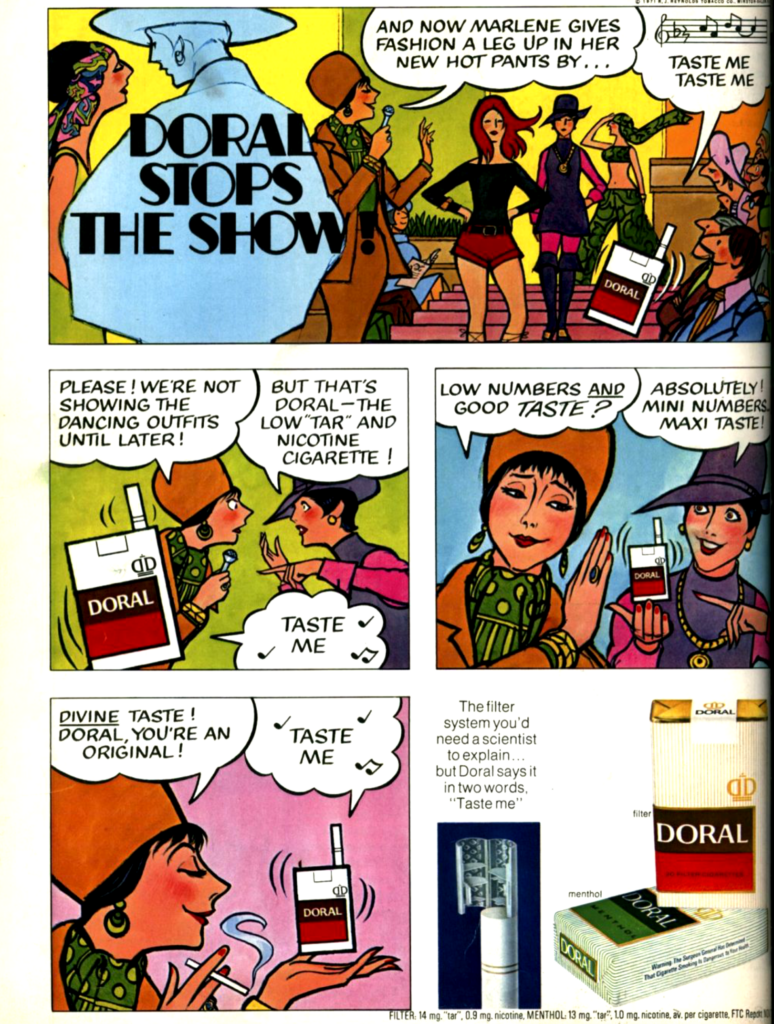
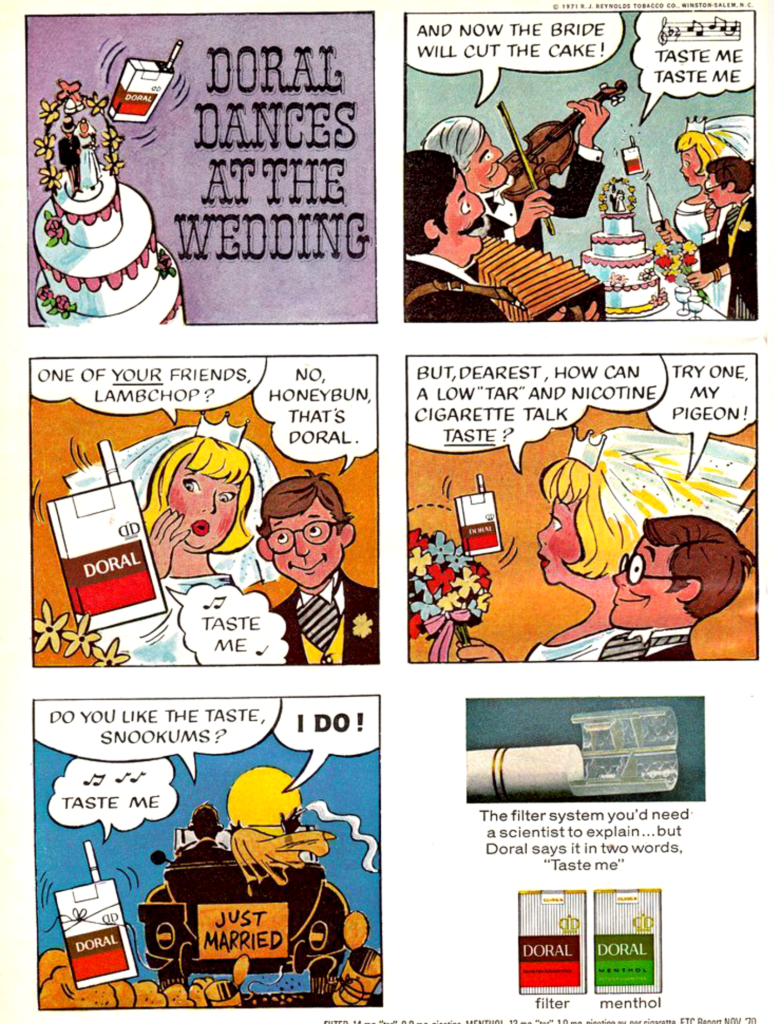
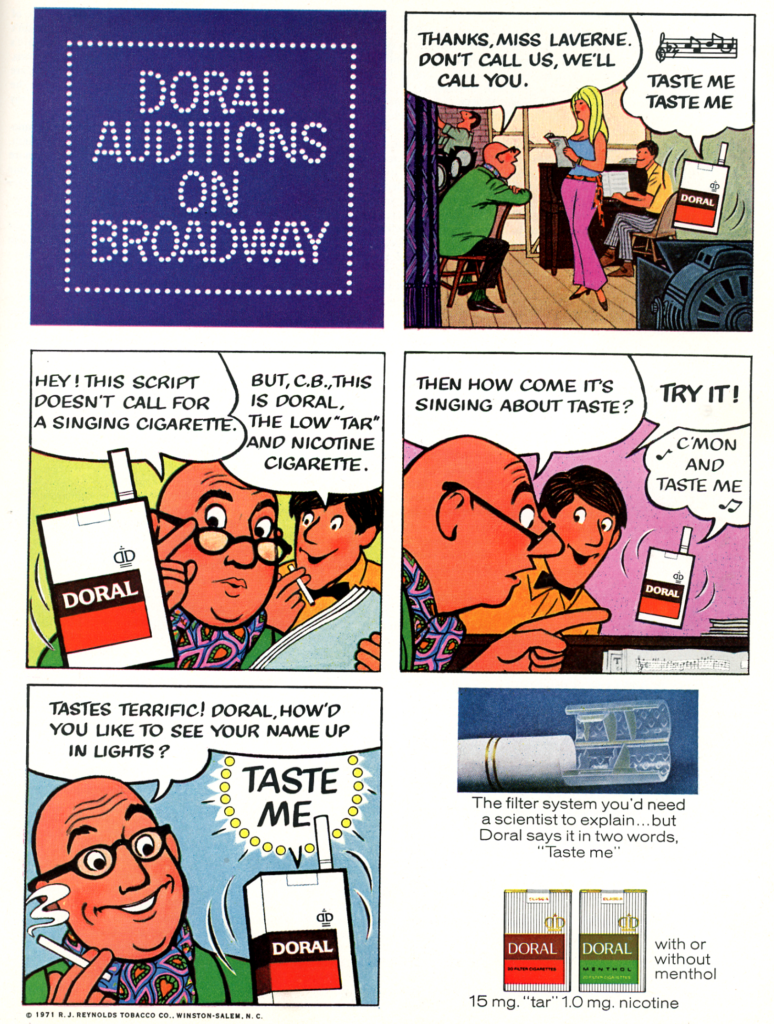
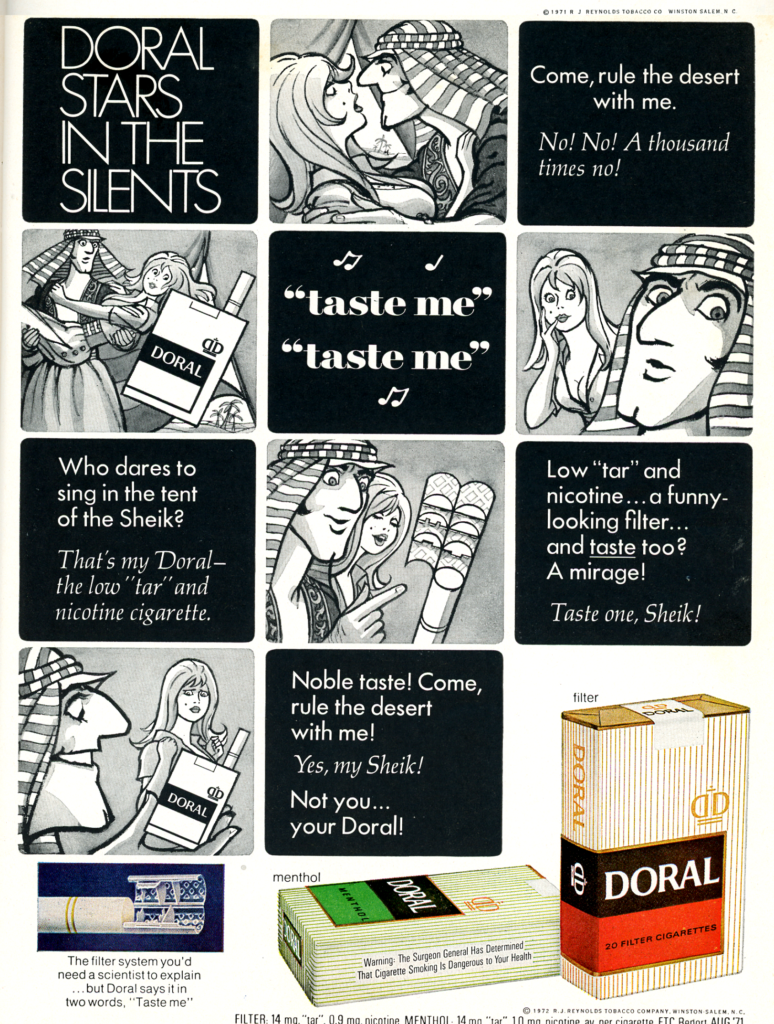
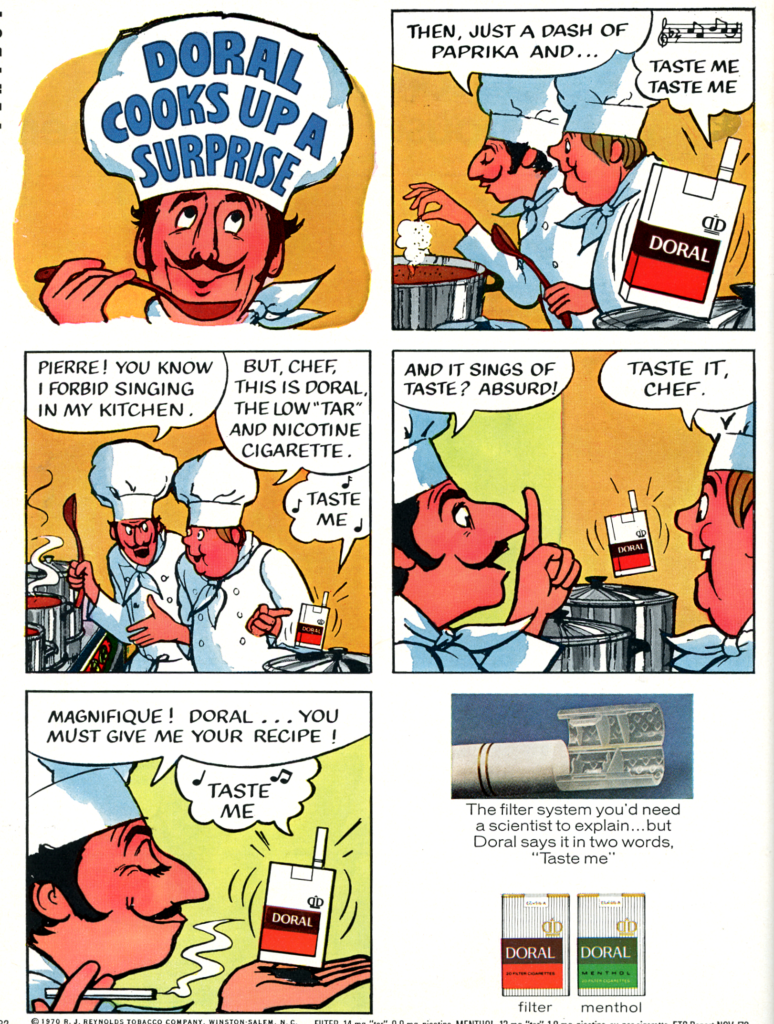
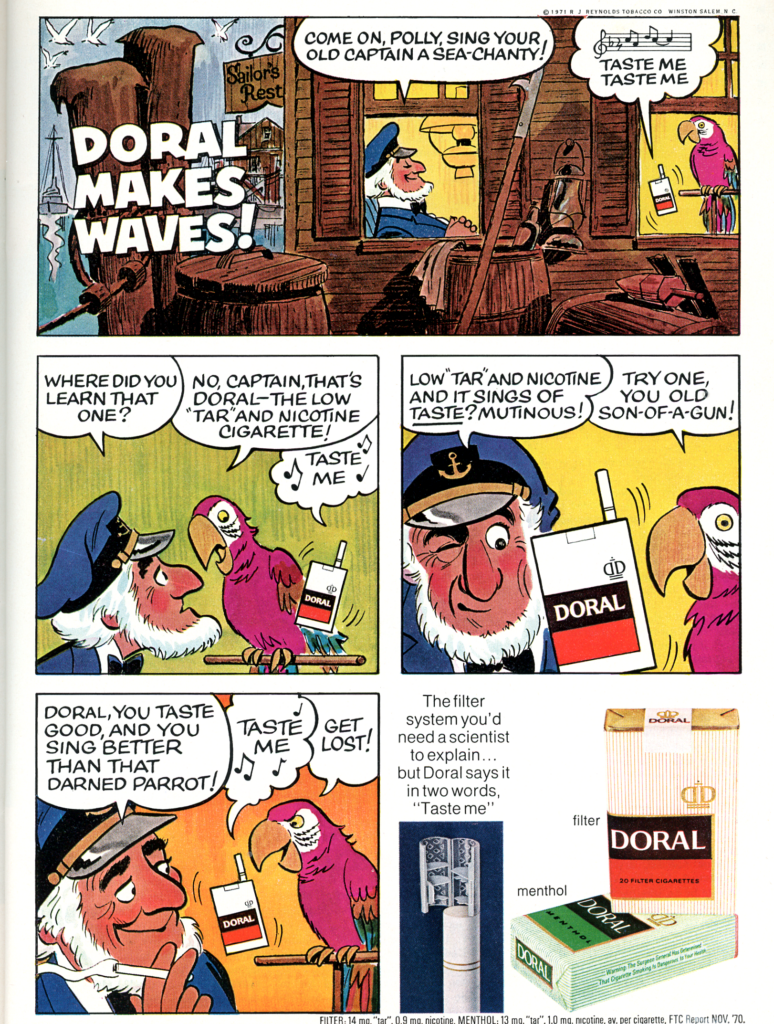

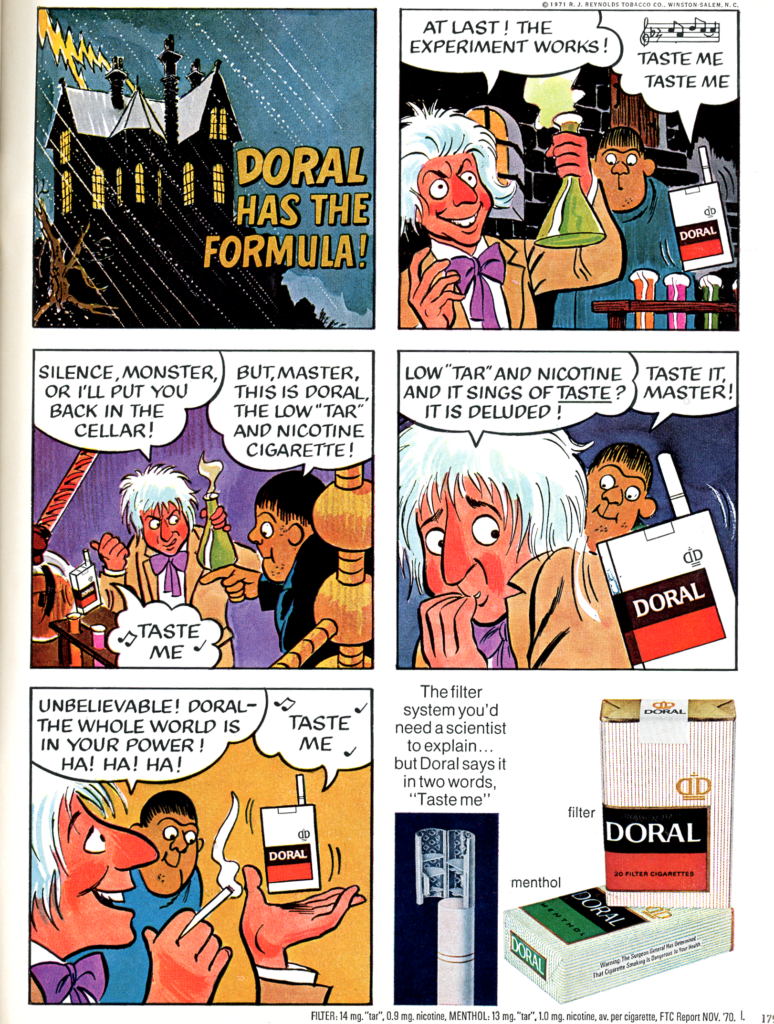
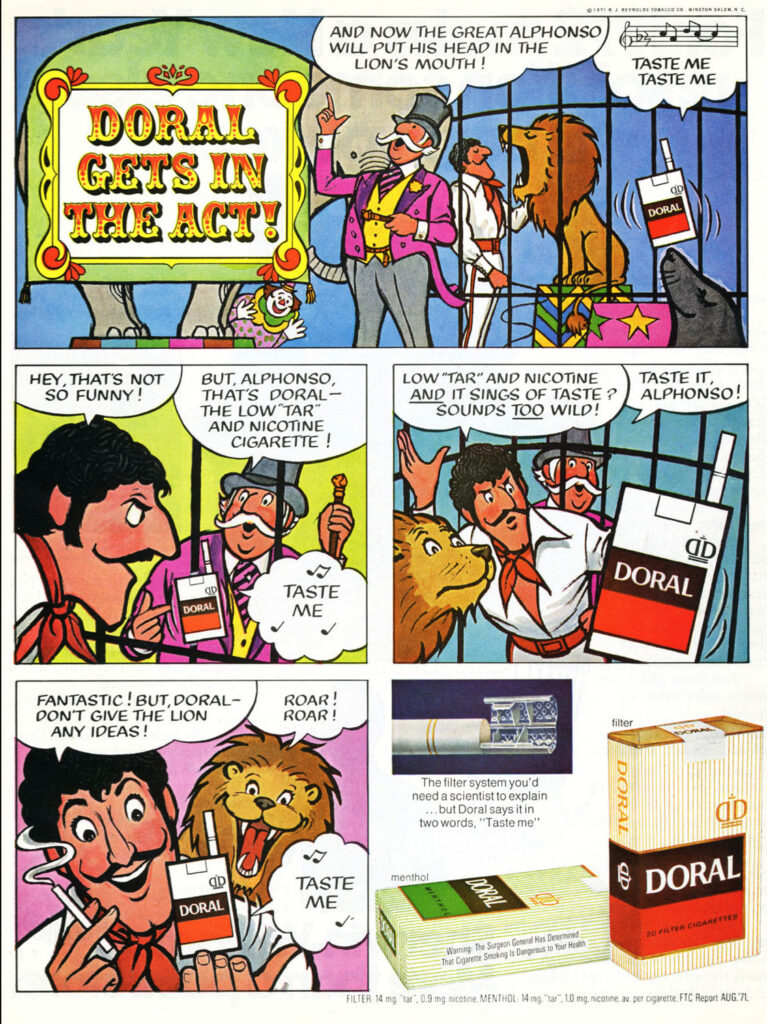
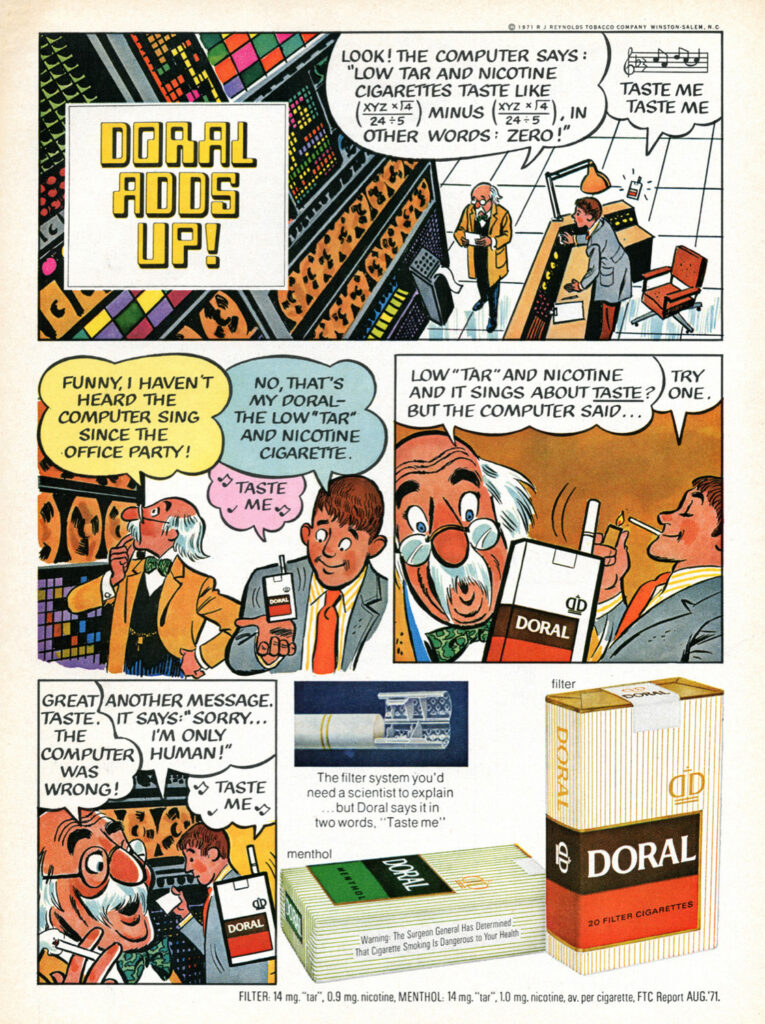
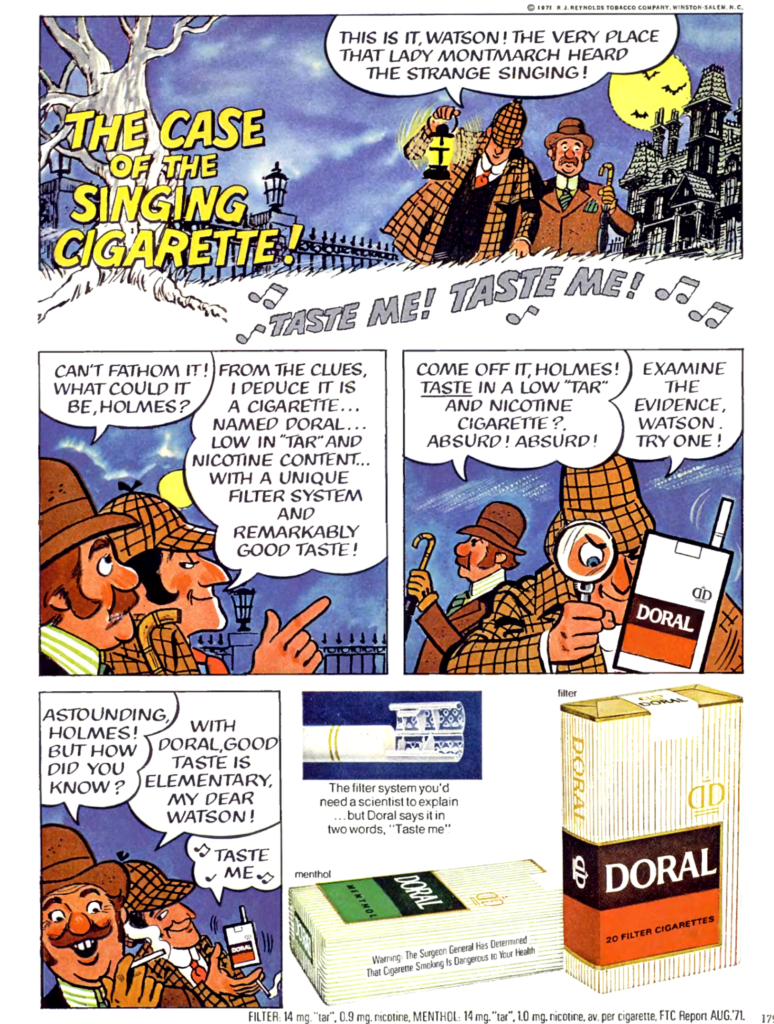
The Filter Fraud
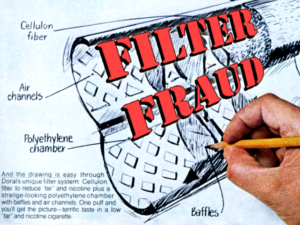
In 1962, the United States Surgeon General declared that cigarettes are harmful to one’s health and cause cancer. In 1965 it was mandated that all cigarettes and advertisements must be labelled as such. Obviously, this represented a huge threat to the tobacco companies’ profits and pipeline of lifelong smokers.
Now that warning labels were required, a new way had to be found to avoid losing huge numbers of cigarette smokers. The solution? The FILTER.

Yes, putting a filter in a cigarette would convince current and potential smokers that filtered cigarettes were safer, and from then on, almost all ads competed to be the lowest “tar” and nicotine cigarette. There was only one problem:
Cigarette companies knew as far back as the 1950s that filters did not make smoking safer, even as they aggressively promoted misinformation to the contrary. In fact, research has shown that filters can actually make cigarettes more dangerous. Not only to the health of smokers, but also to the environment.
Discarded cigarette butts can leach toxic waste such as heavy metals, formaldehyde and benzene into the groundwater and soils, and in a ground-breaking lawsuit, the city of Baltimore is suing tobacco companies over the issue.
Kent and the Micronite Filter
Of all the cigarette brands ever made, Kent was by far the most lethal. Why? Because its heavily promoted Micronite filter was made with asbestos.
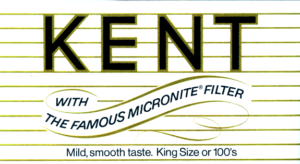
That’s right, Kent smokers were inhaling crocidolite asbestos fibers into their lungs. Many experts consider crocidolite the most hazardous of asbestos material (even Kent cigarette butts are considered hazardous), and as a consequence, fatality rates from smoking Kent cigarettes were much higher.
What was worse, even the wives of the plant employees where the asbestos was made had higher death rates from washing their husbands’ dusty clothes and inhaling asbestos. In short, the “famous Micronite filters” were a health and environmental catastrophe.
Kent portrayed its cigarettes in luxury settings as a way to give it a classy, upscale image, and every ad boasted of The Famous Micronite Filter. In none of the ads did they explain what “Micronite” was, or why it was famous, or why it made Kent a better cigarette.
This is what “the famous Micronite filter” looks like:

Smokers were drawing smoke through these very short, sharp fibers, fibers which were pulled into the lungs, where they caused permanent damage. A company could not have designed a more deadly cigarette if they tried.
So, what happened to all those Kent smokers, and did any of them sue? Mother Jones has an excellent story about Kent cigarettes, the “famous Micronite filter”, the toll it took on smokers, and the lawsuits, which are still being waged. Check out the link HERE.
They’re Not For Everybody
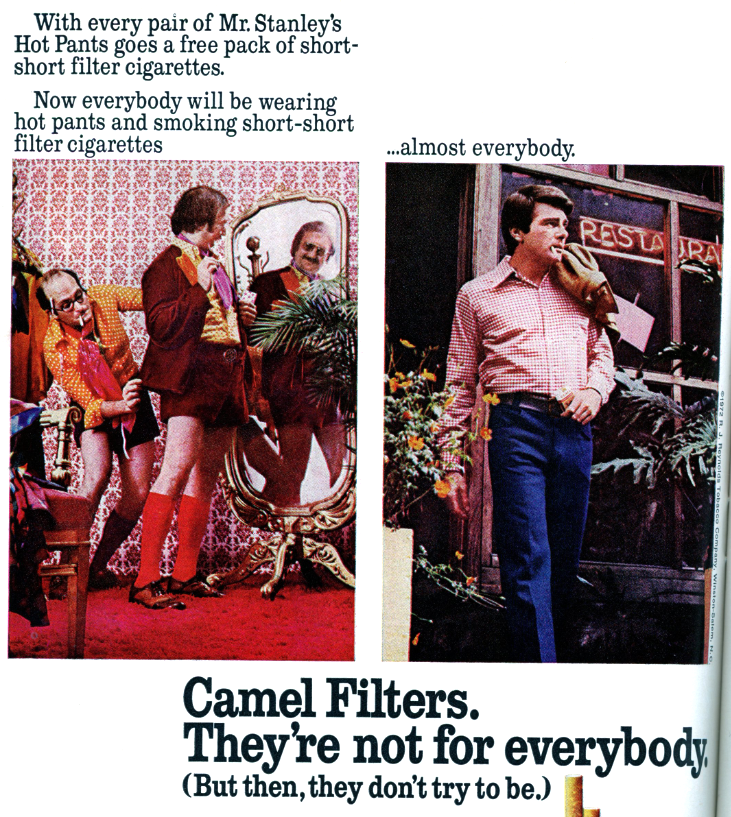
Another Camel ad series was the not for everybody campaign, which tried to promote the idea that Camel smokers were so cool they weren’t swayed by quirky fads. Unlike the oddball people who smoked other cigarettes, Camel smokers were down to earth, unpretentious and sensible minded.
I have no idea how successful this campaign was; in hindsight, it doesn’t seem like a very effective way to market cigarettes. Notice that in every ad, the Camel smoker has his coat slung over his shoulder for some reason. Was that an I’m cool pose…?

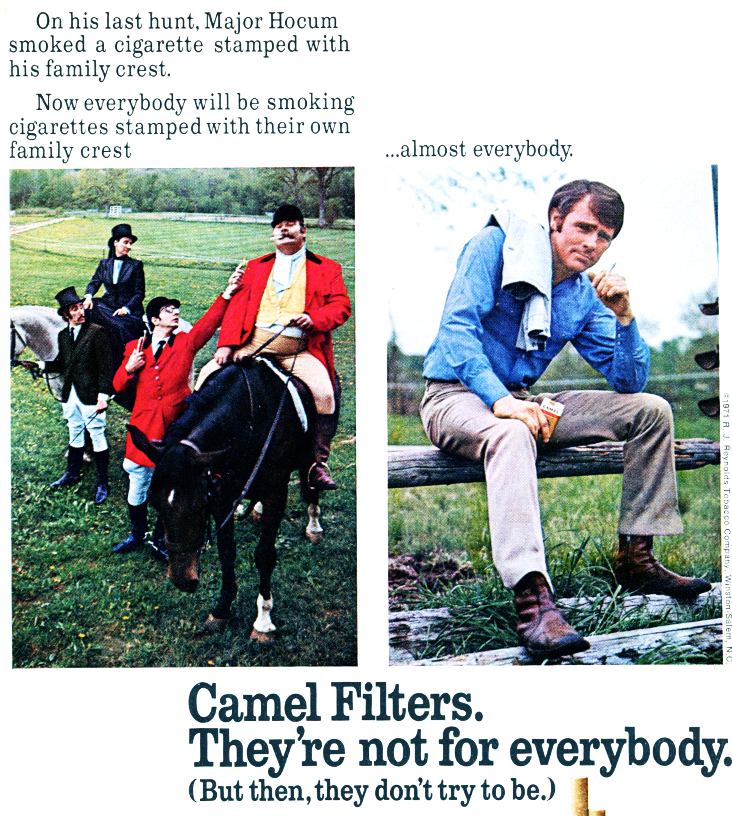
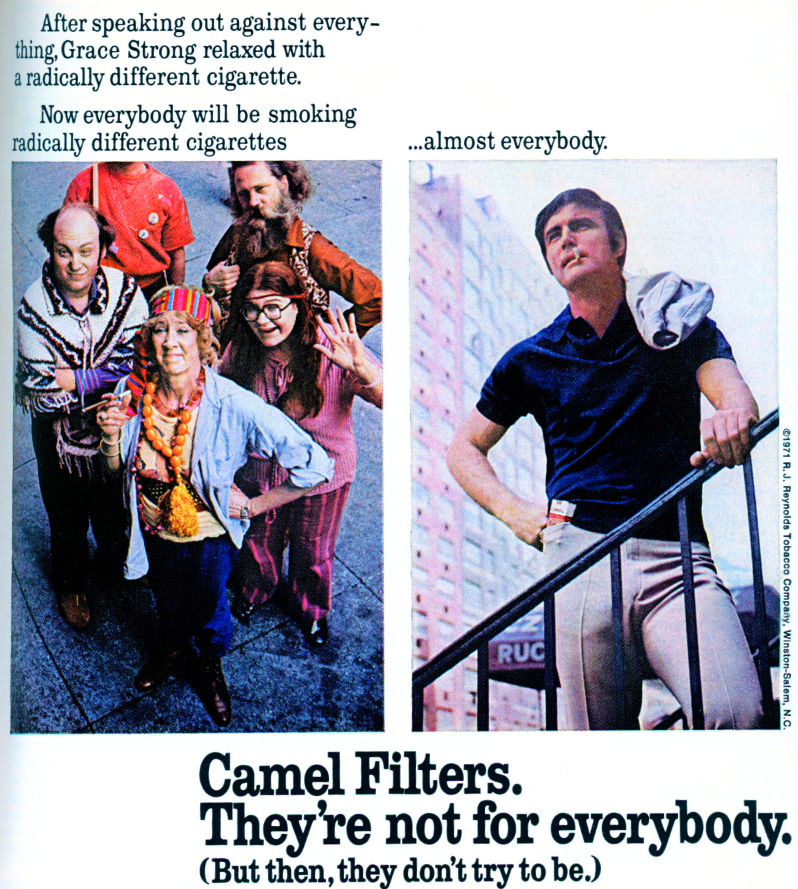
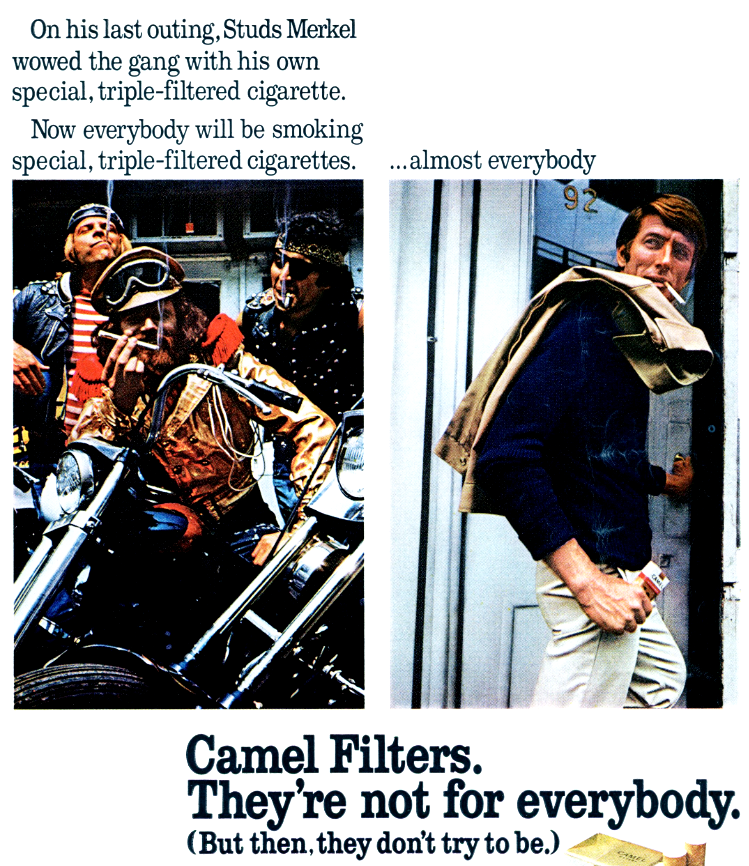
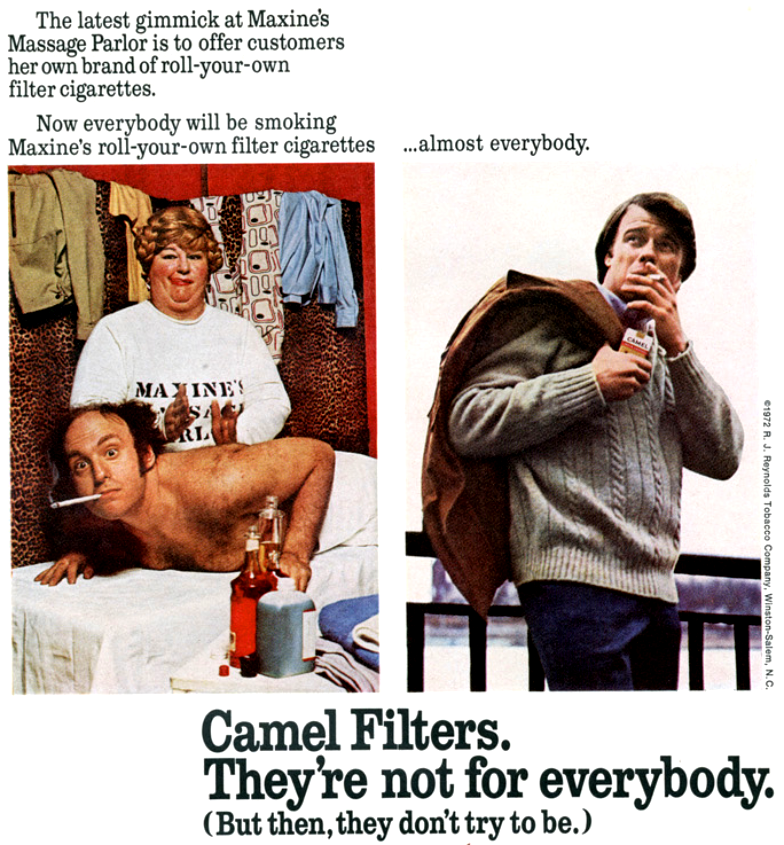
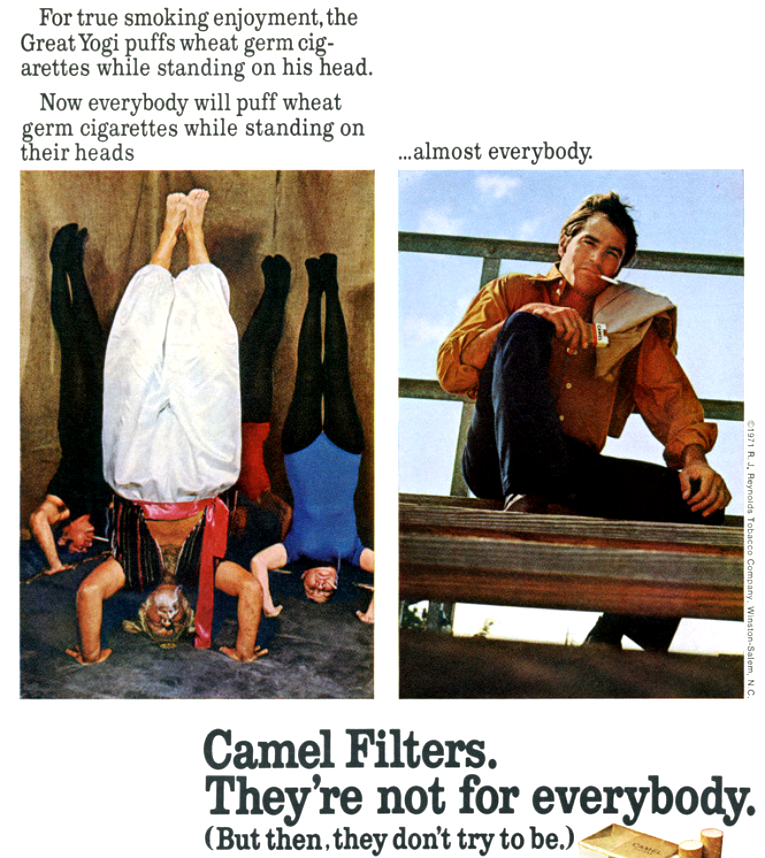

The other version of the not for everyone campaign showed a group of phony, oddball characters, and you, the reader, had to spot the Camel smoker, who was always the most normal looking of the bunch.
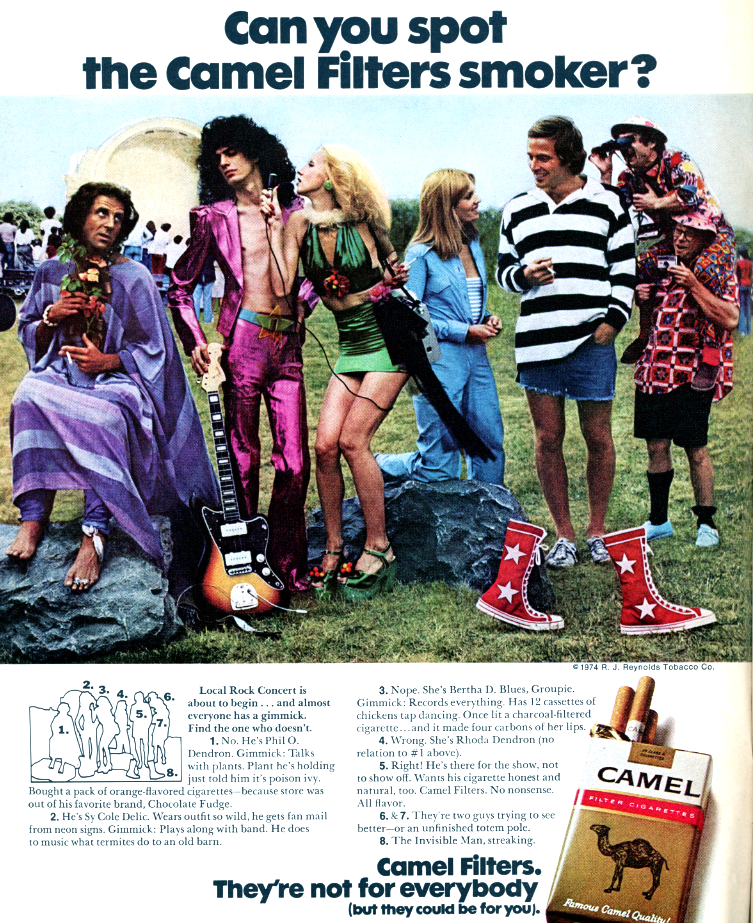
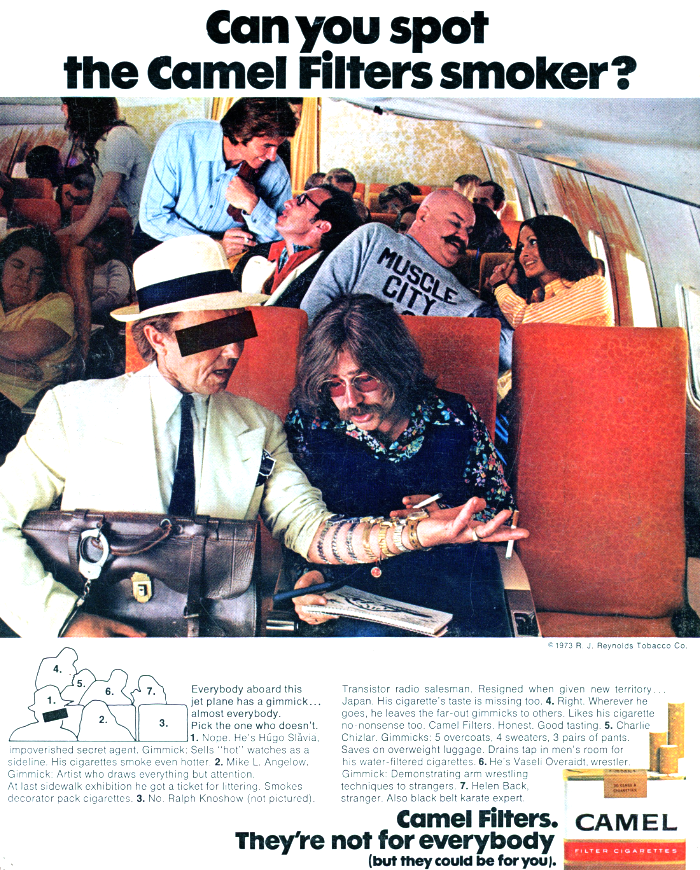
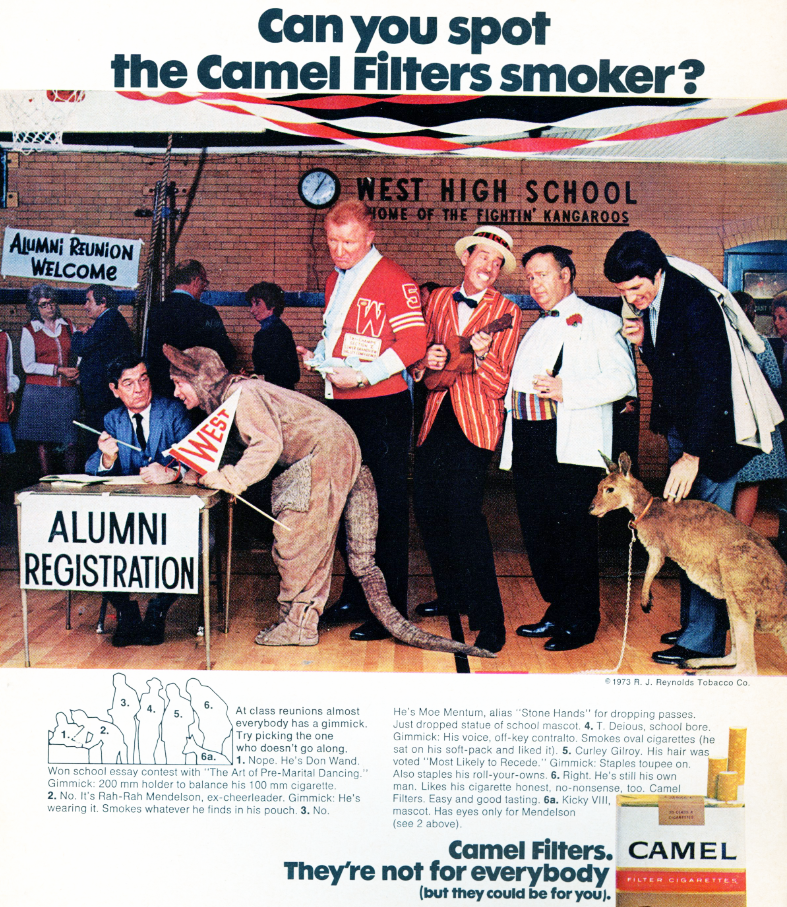

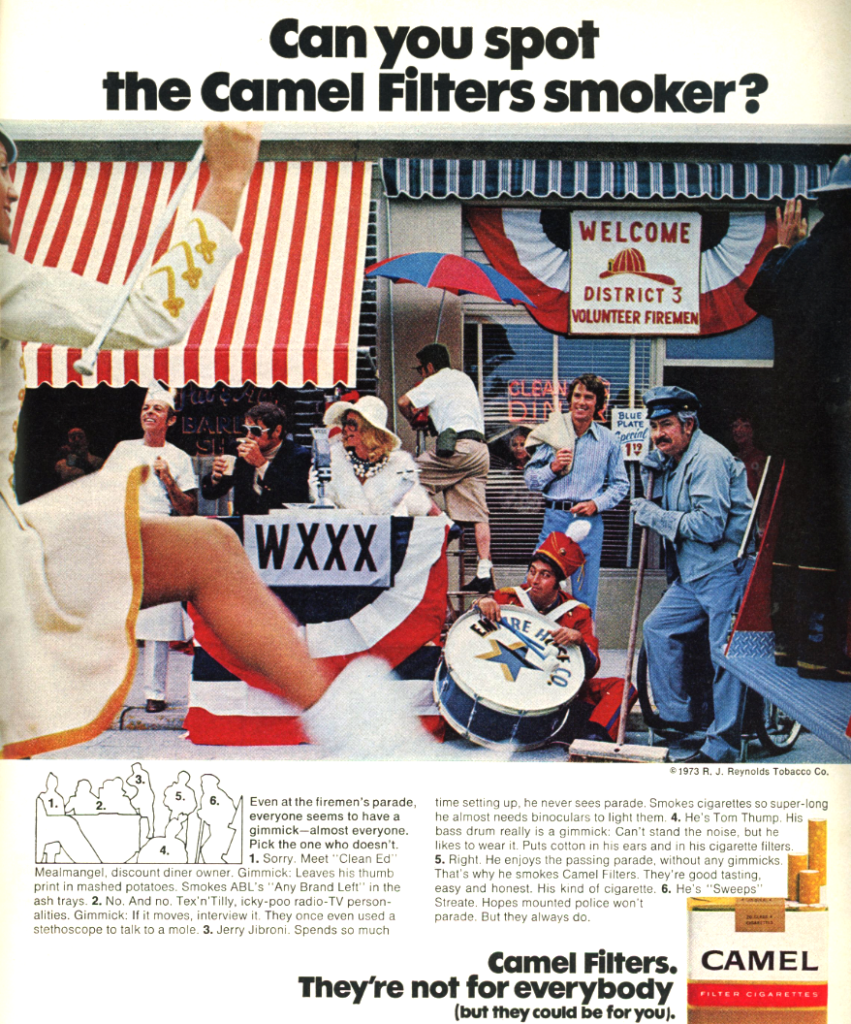
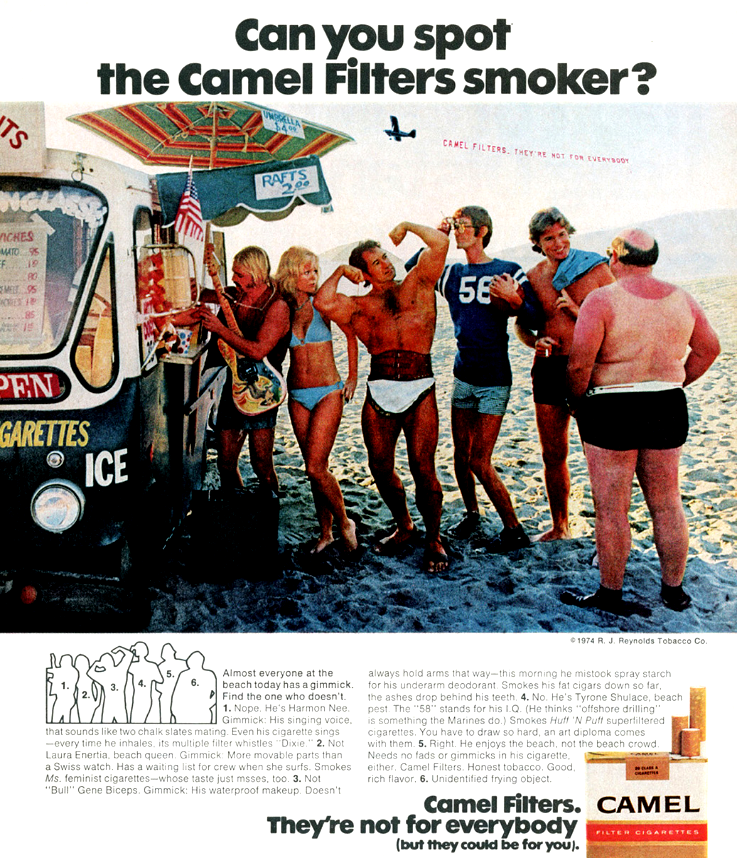
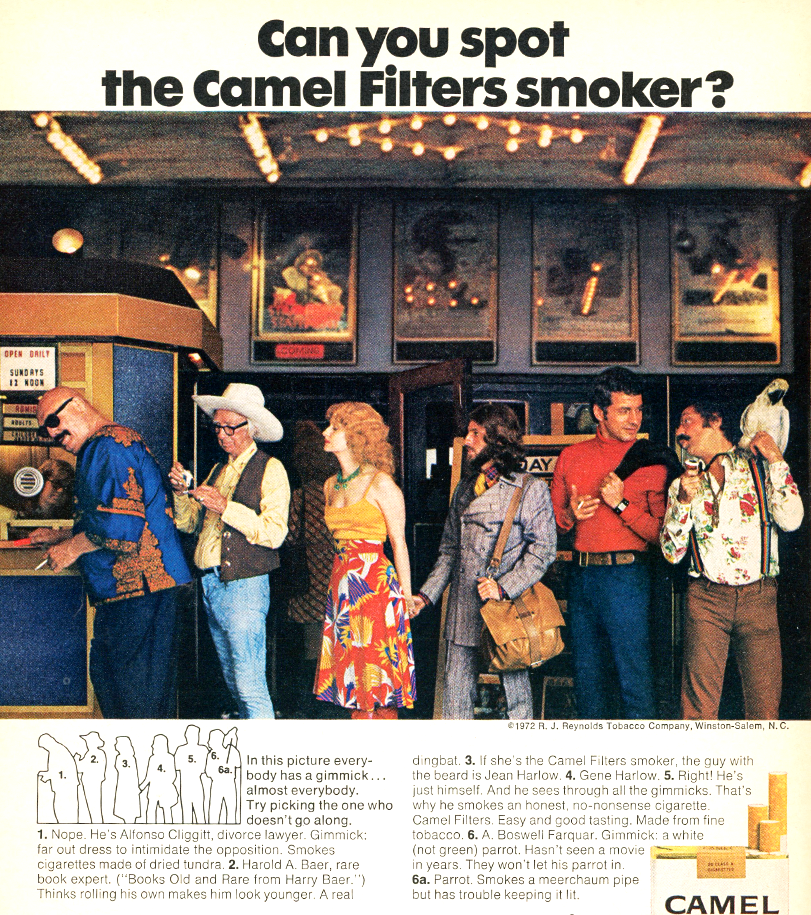
Benson & Hedges
Benson & Hedges had a series of ads that tried to humorously demonstrate how long their cigarettes were; the people smoking them kept bumping them into things, deforming the end of the cigarette.
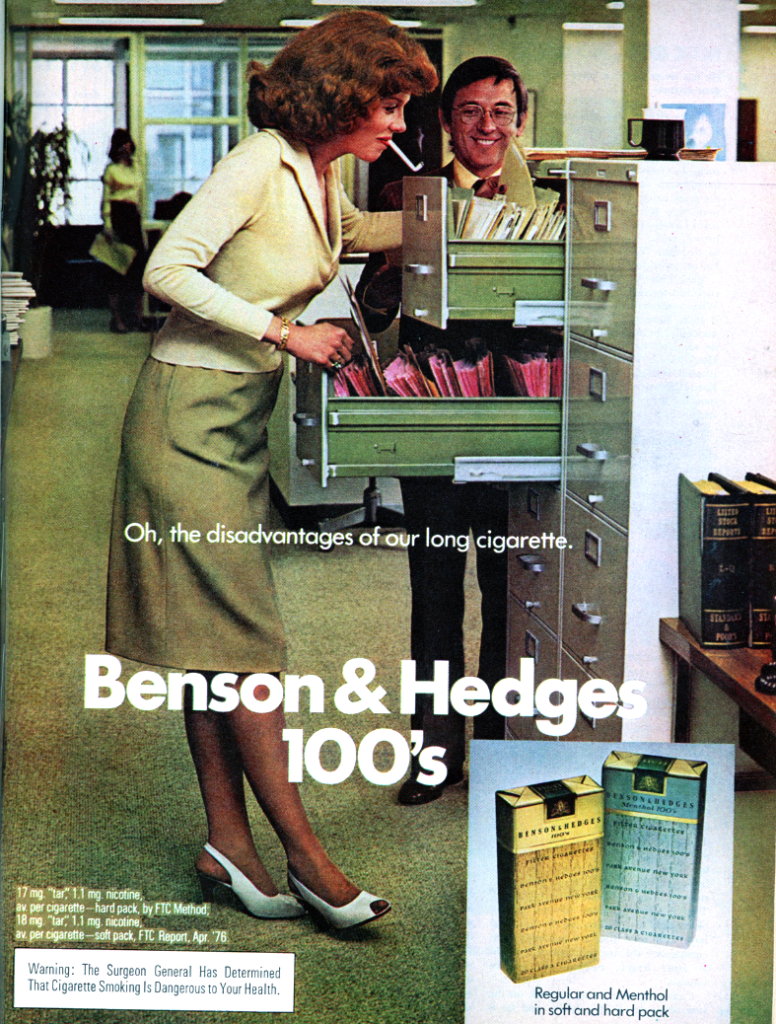
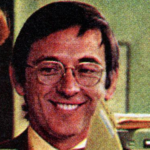 Here’s a close-up of the shady leer of the guy in the ad; is he looking at her cigarette or down her shirt?
Here’s a close-up of the shady leer of the guy in the ad; is he looking at her cigarette or down her shirt?

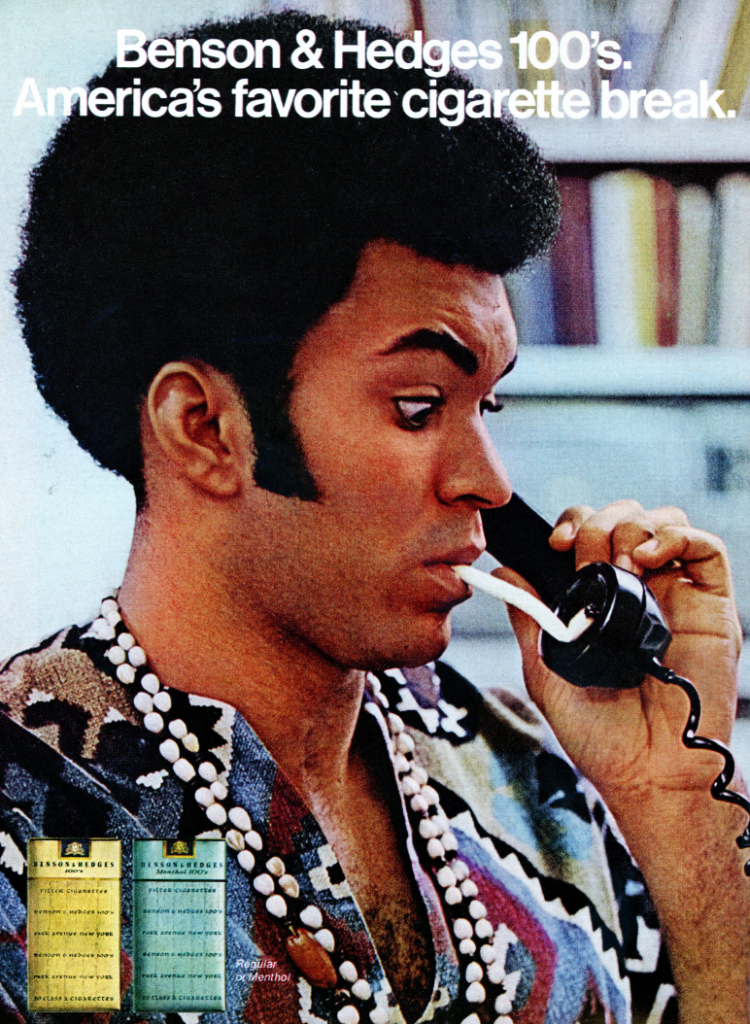
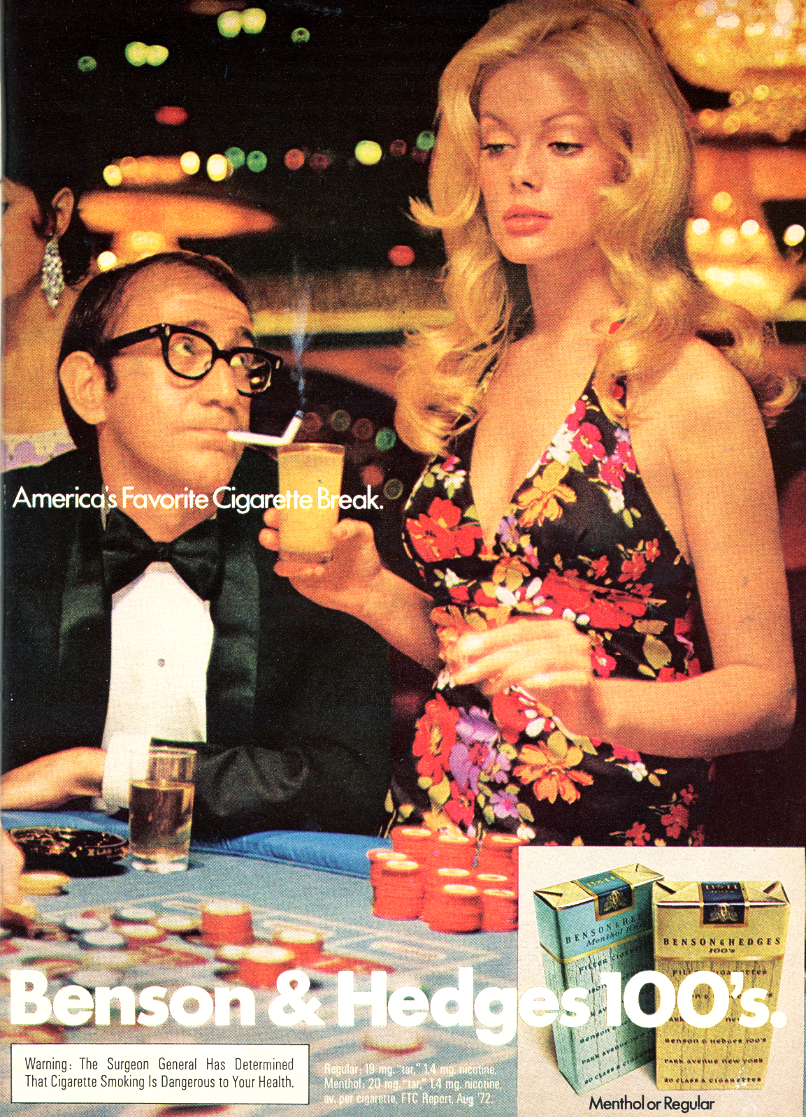
In this not-at-all creepy ad, a city worker is poised to grab a good look up a passing woman’s dress. Yeah, nothing wrong with that.
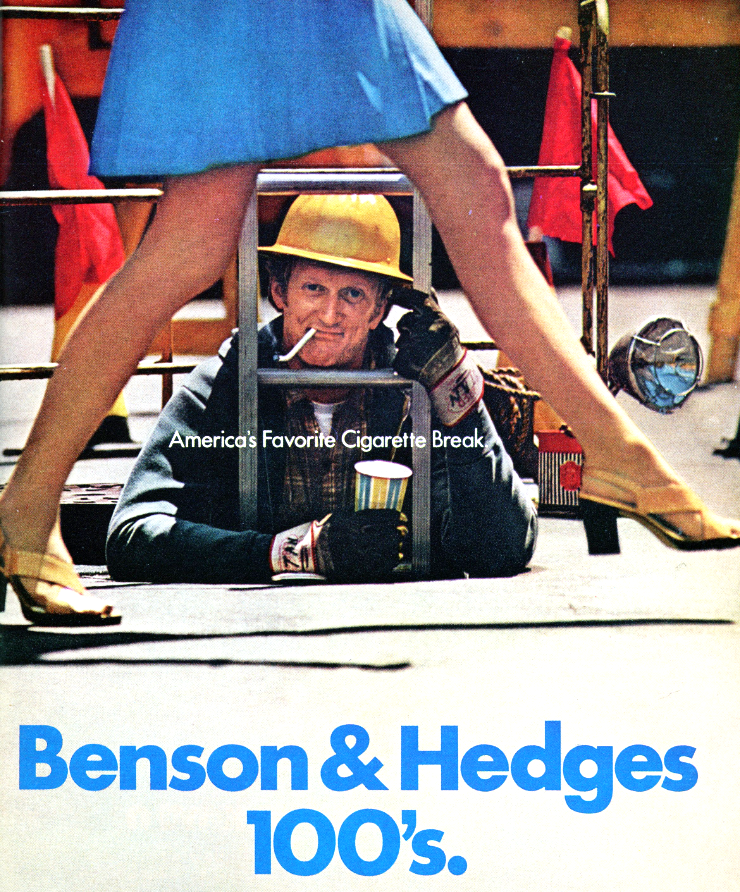
Benson & Hedges 100s also ran clever sweepstakes where the winner could choose 100 of a wide variety of things:
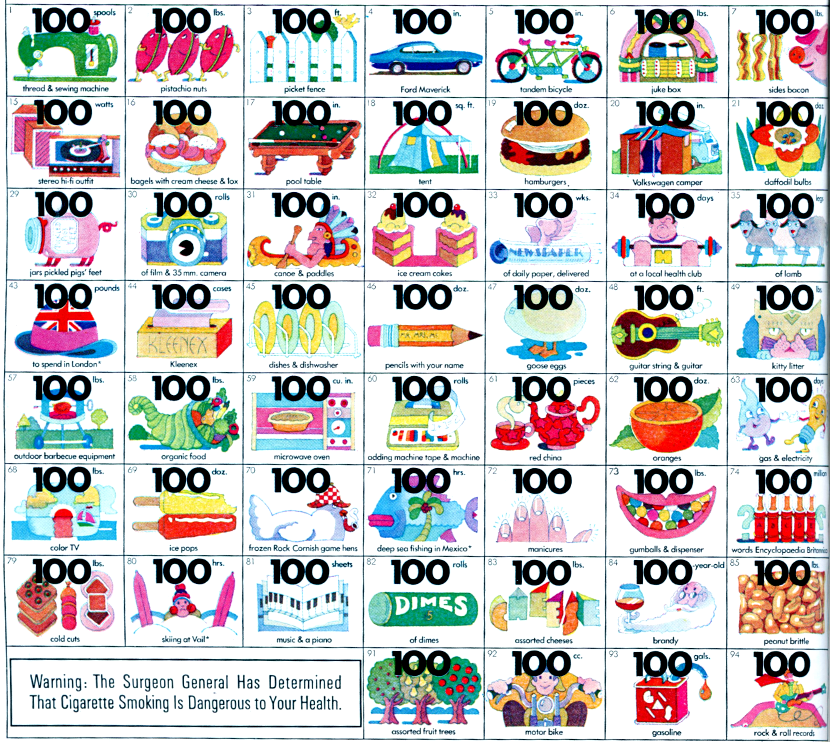

Straight Talk About Winston
Winston featured serious looking people making eye contact with the reader, with the message that Winston is for real. No gimmicks, fancy image or catchy slogans. The only reason to smoke Winstons is because of taste (not addiction, not at all, don’t be ridiculous).

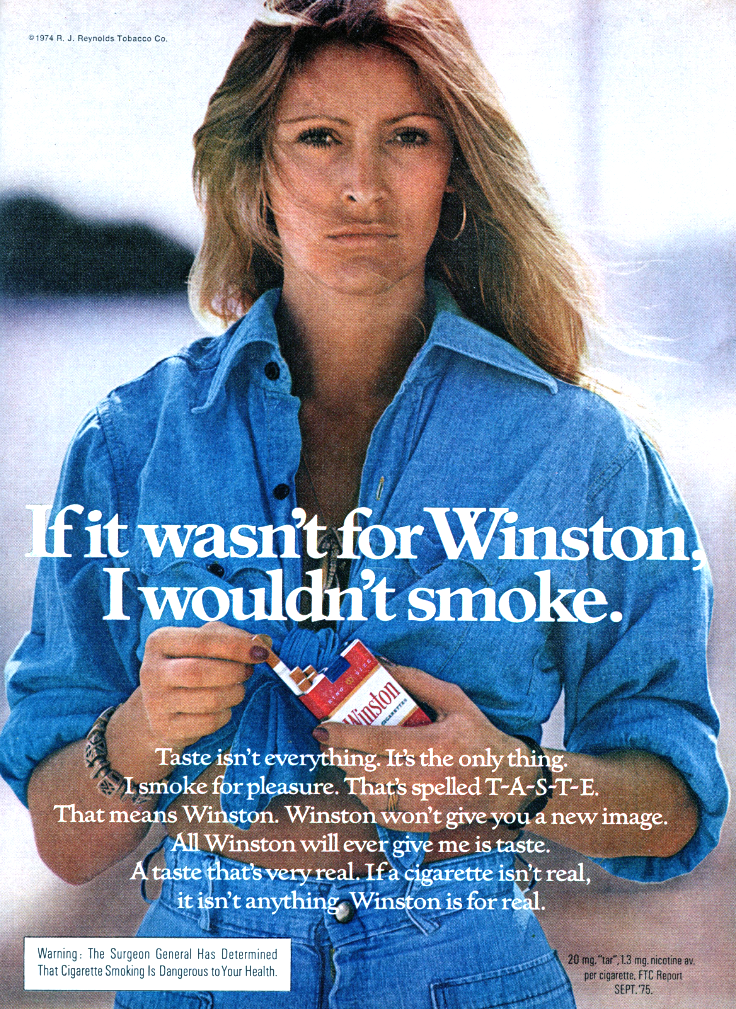
These people don’t just look serious, they look miserable. Wait until they learn they have been inhaling butane, formaldehyde, ammonia, arsenic and a whole bunch of other toxins into their lungs.
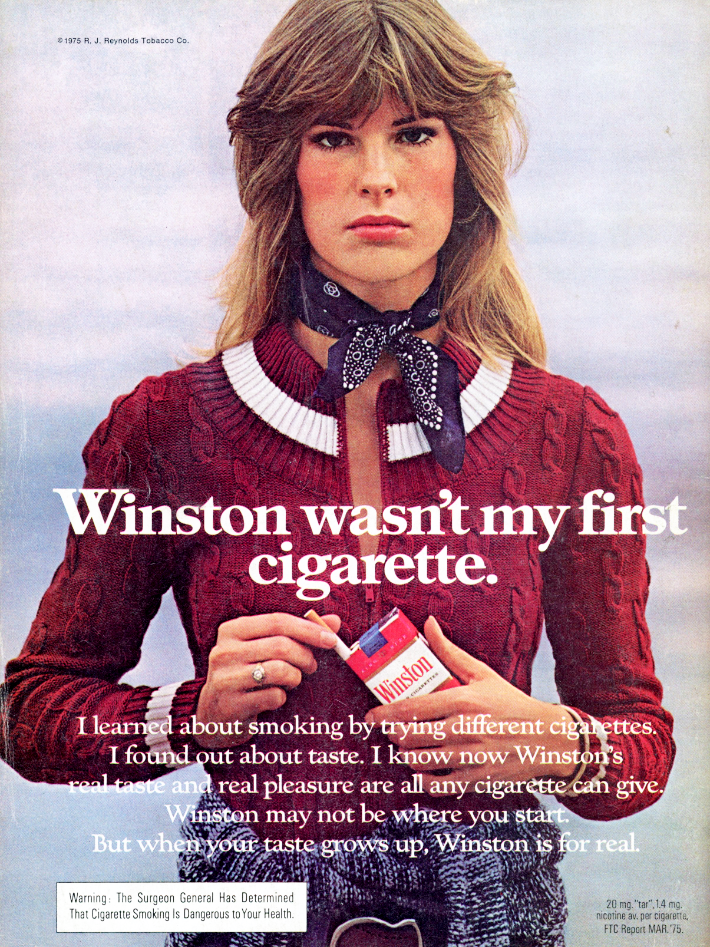
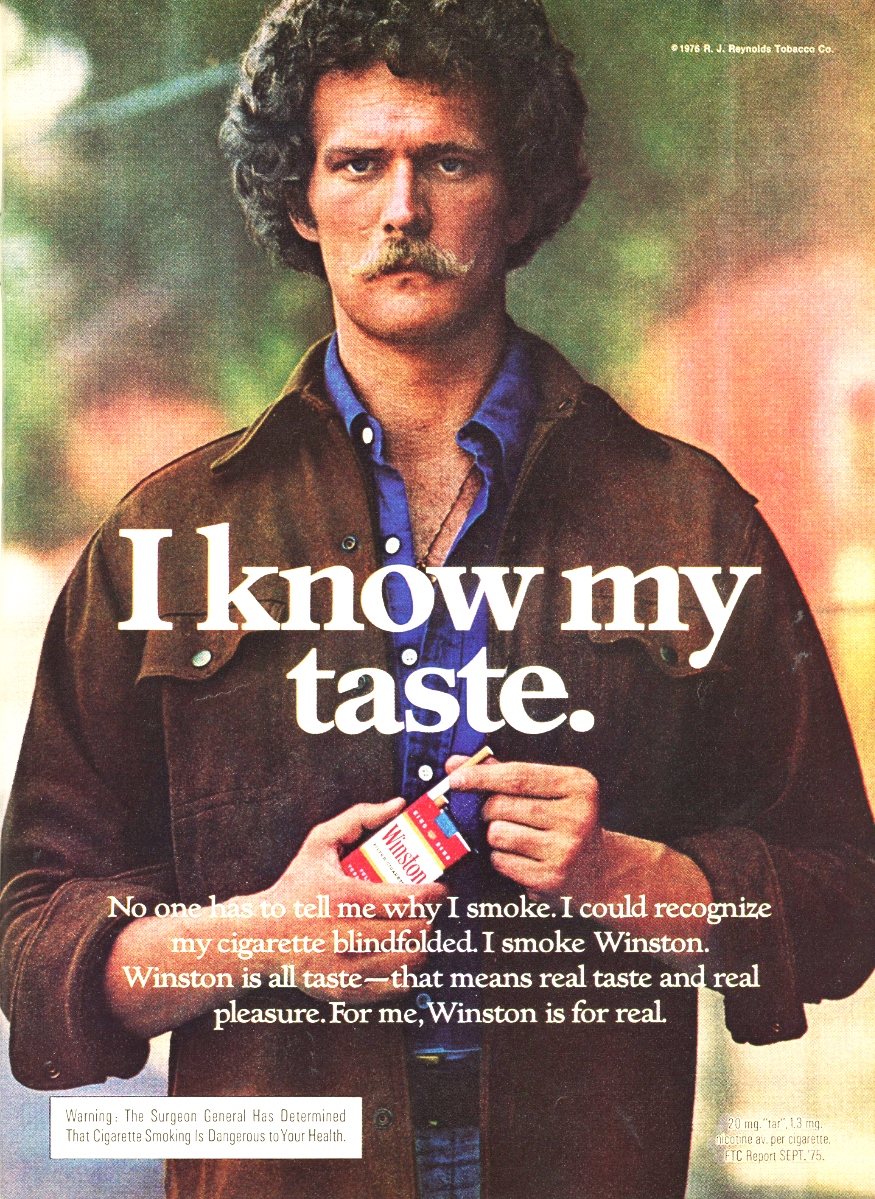
The above ad campaign was brilliantly parodied in Mad magazine, below:
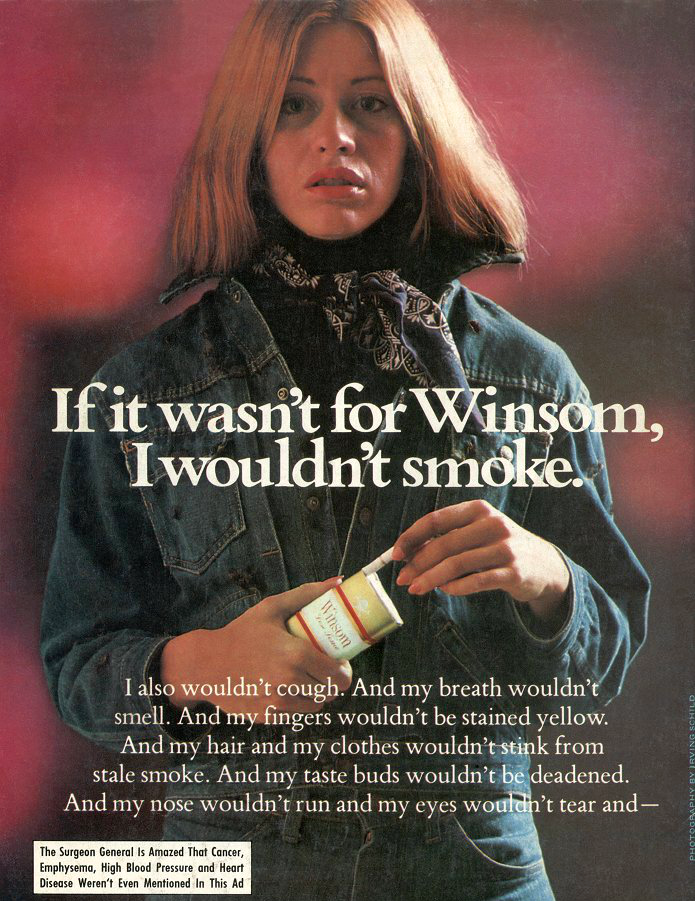
The L&M Moment
L&M’s ad gimmick was the L&M moment, a time to relax with an L&M cigarette after a long day or a quiet moment.
THIS looks incredibly inviting. I’d love to have a chalet like that. But without the nauseating stale cigarette smoke in the furniture, clothes, hair and walls.
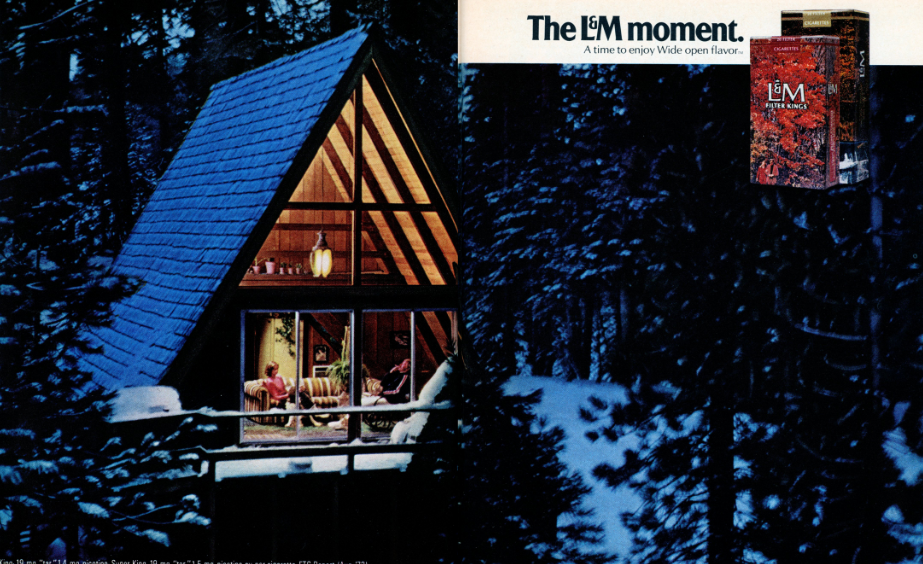
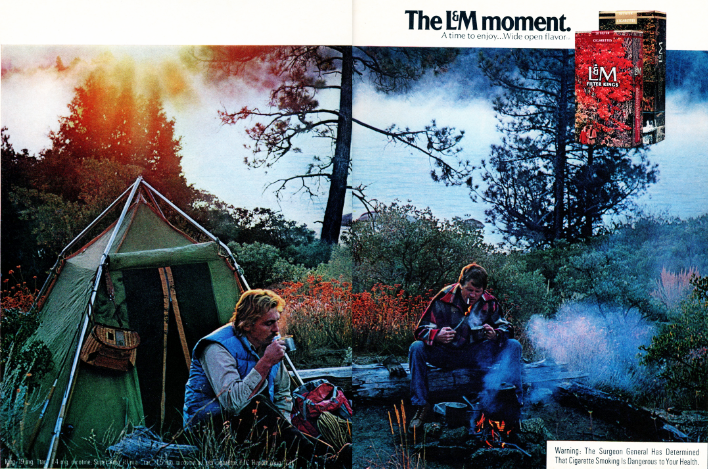
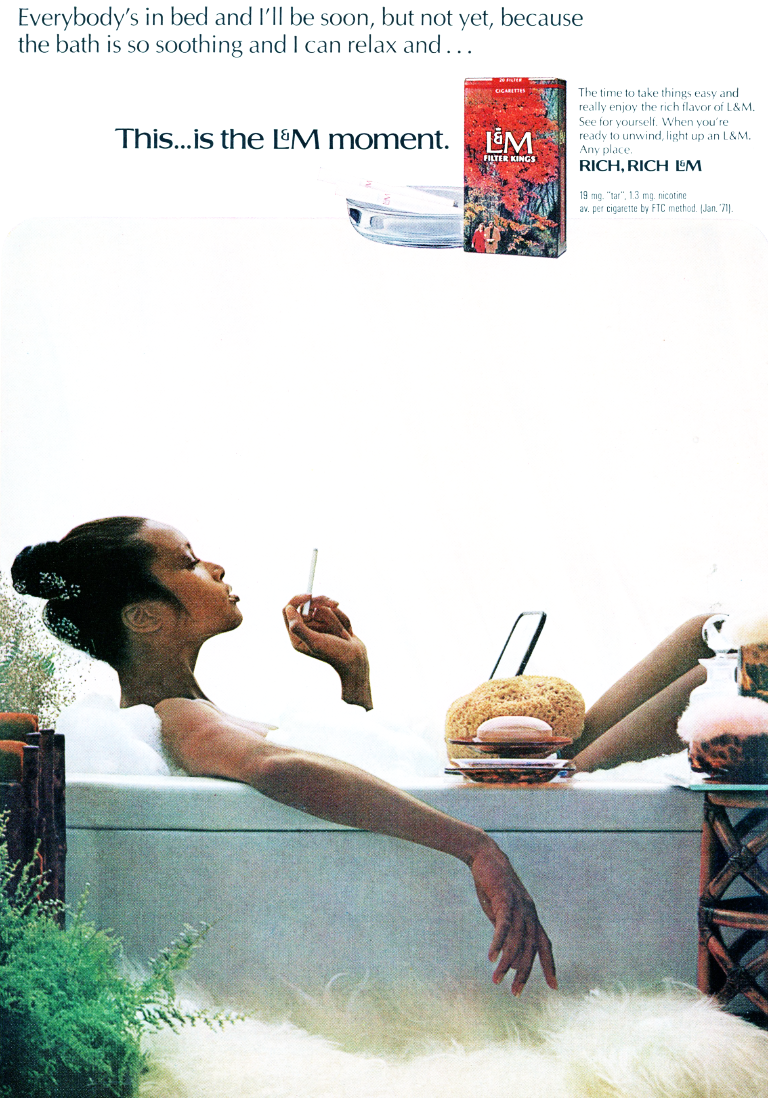
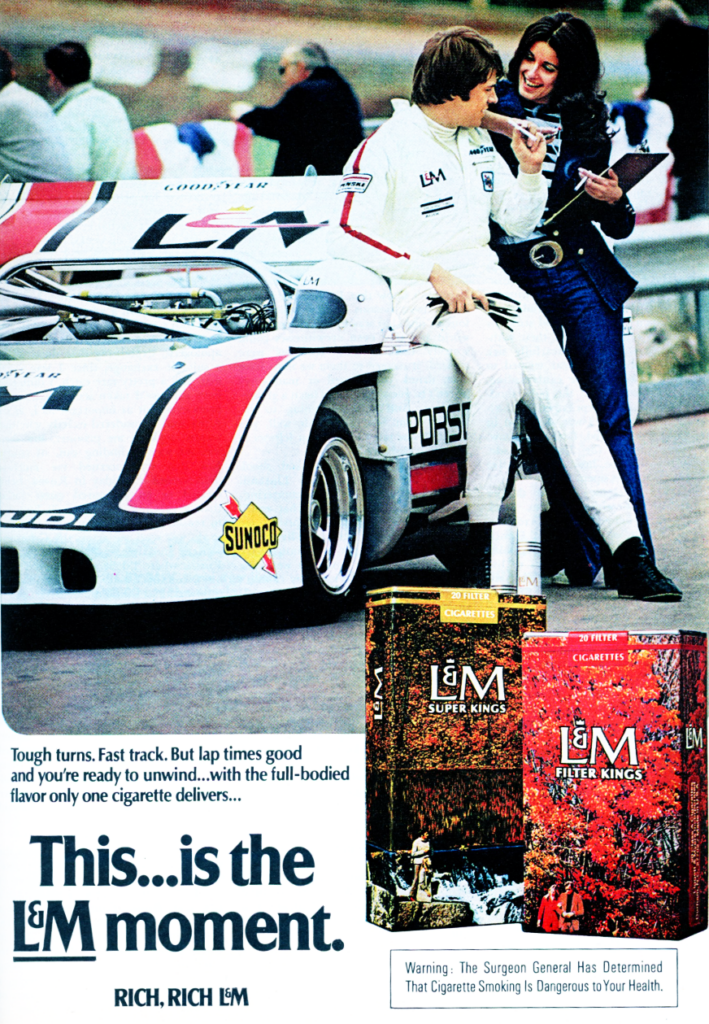

Salem and the Great Outdoors
Menthol cigarettes such as Salem, Kool and Newport leaned heavily on the outdoor imagery: cool mountain lakes, water, being out in nature. Menthol eases the harsh effect cigarette smoke has on the throat and is typically favored by new cigarette smokers.
Below, you have a couple of average guys on an outdoor adventure. No glamorous models; these are working class guys who aimed to appeal to working class guys. Smoke a Salem and feel like you are on your own outdoor adventure!
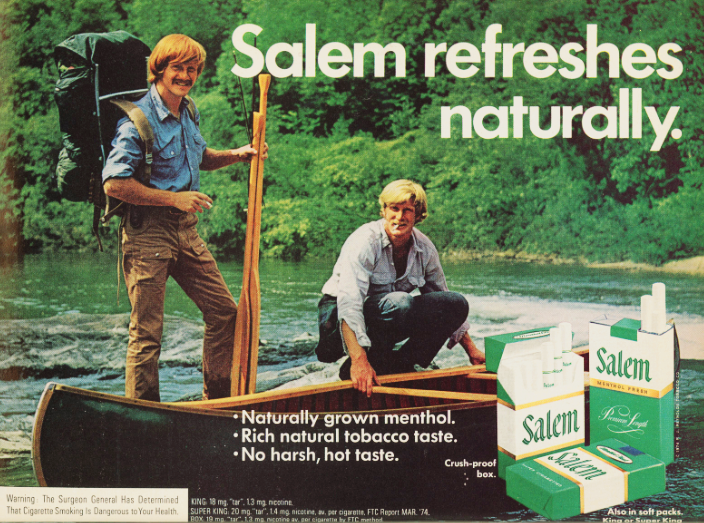
Below are the same two guys, photographed on the same photo shoot, presumably. Many cigarette companies offered products you could buy that reinforced the healthy, adventurous, outdoorsy image the cigarettes were promoting, despite smoking being the least healthy thing you can do.

Emphasizing the cooling effect of menthol, this guy is swimming. How is he going to smoke a cigarette if his hands are wet?
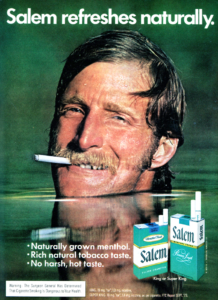
Newport – Alive With Pleasure
Newport, another menthol cigarette, had a long-running Alive With Pleasure campaign, showing happy, excited people living life. If smoking isn’t a pleasure, why bother? Because nicotine is incredibly addictive, that’s why.
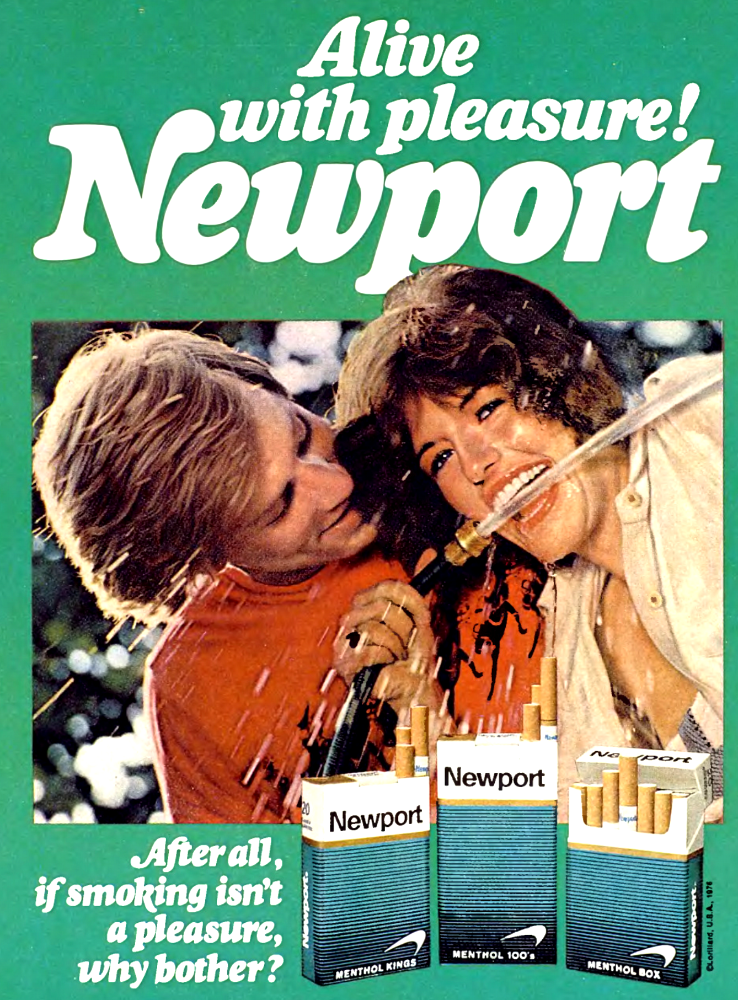
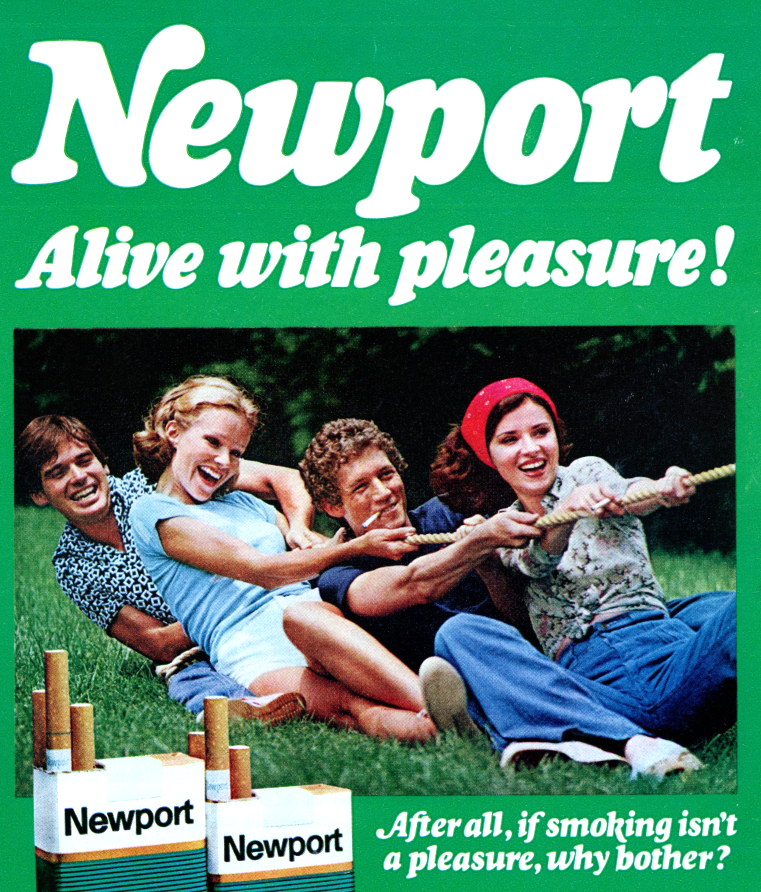
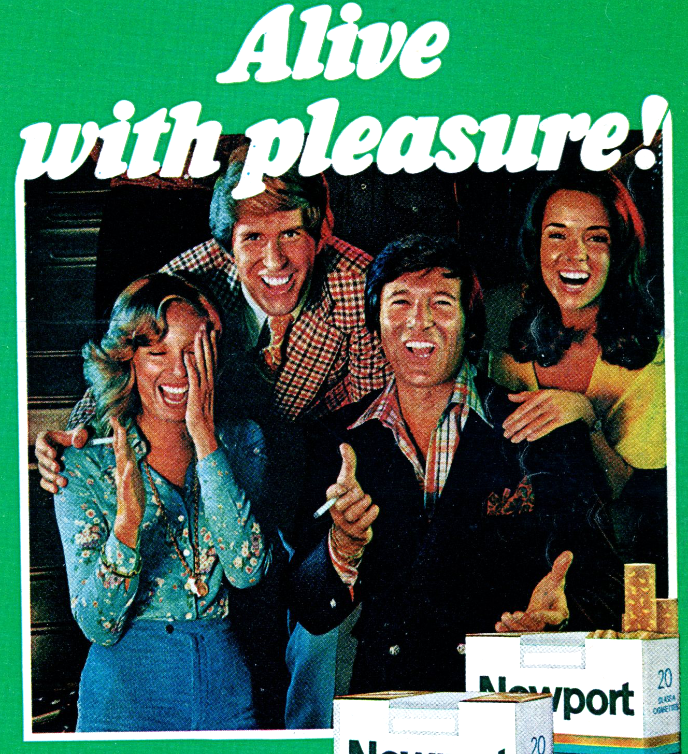
I included the ad below, for Raleigh cigarettes, because the guy looks like Jerry Reed, the actor and singer who was in movies with Burt Reynolds.
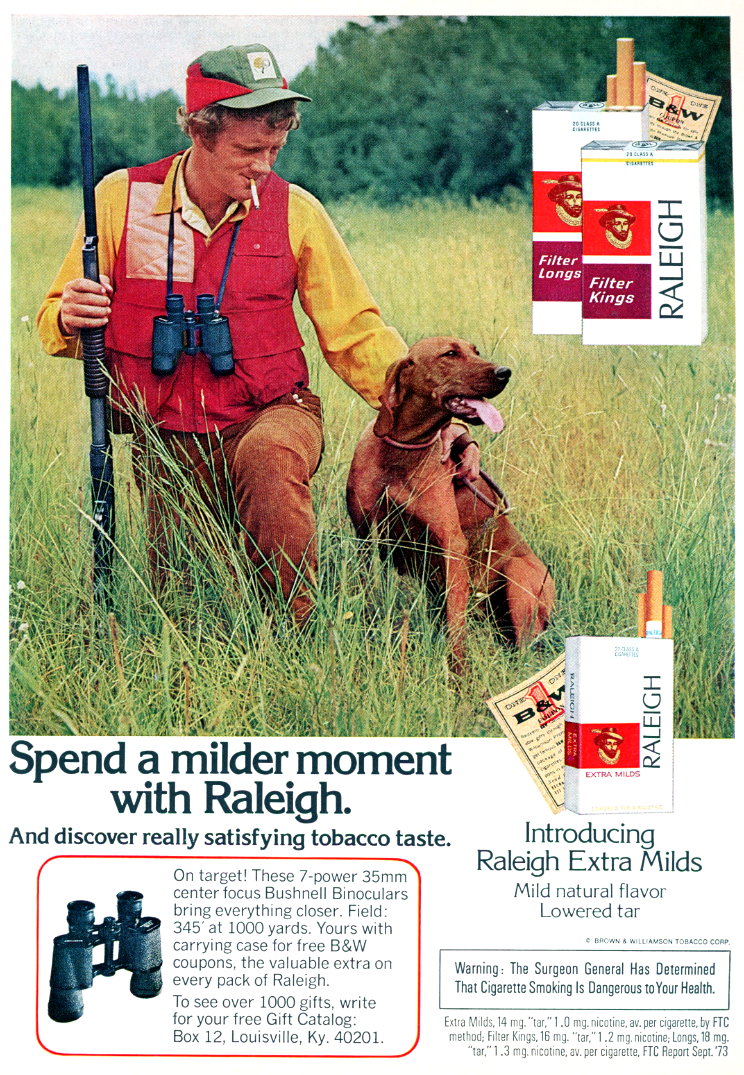
The Impossibly Cool Joe Camel
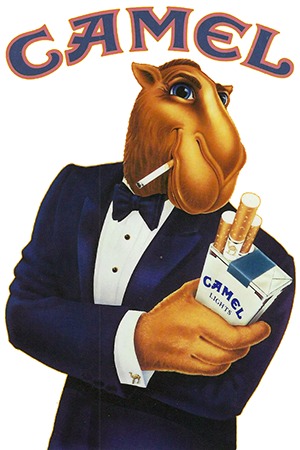
Joe Camel was one of the most successful (and controversial) cigarette ad campaigns in modern times, and ran from 1987 to 1997, before it was forced to be retired amid accusations that the campaign targeted underage smokers with its cartoon appearance and impossibly cool image. [images source: Stamford Research Into the Impact of Tobacco Advertising]
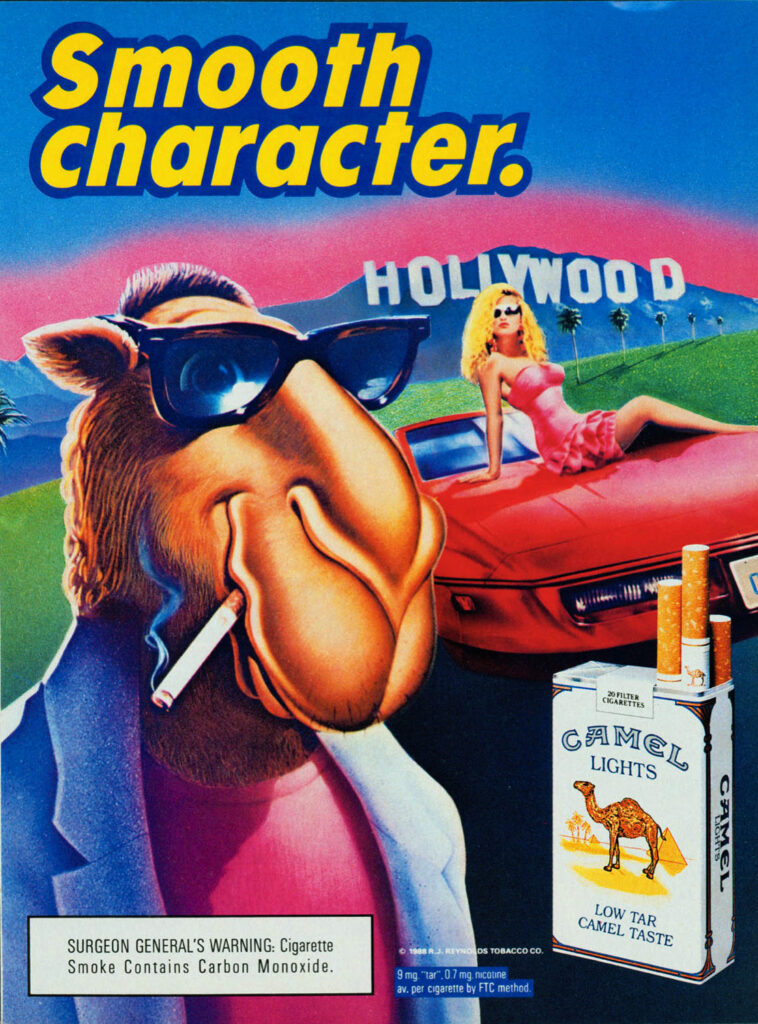

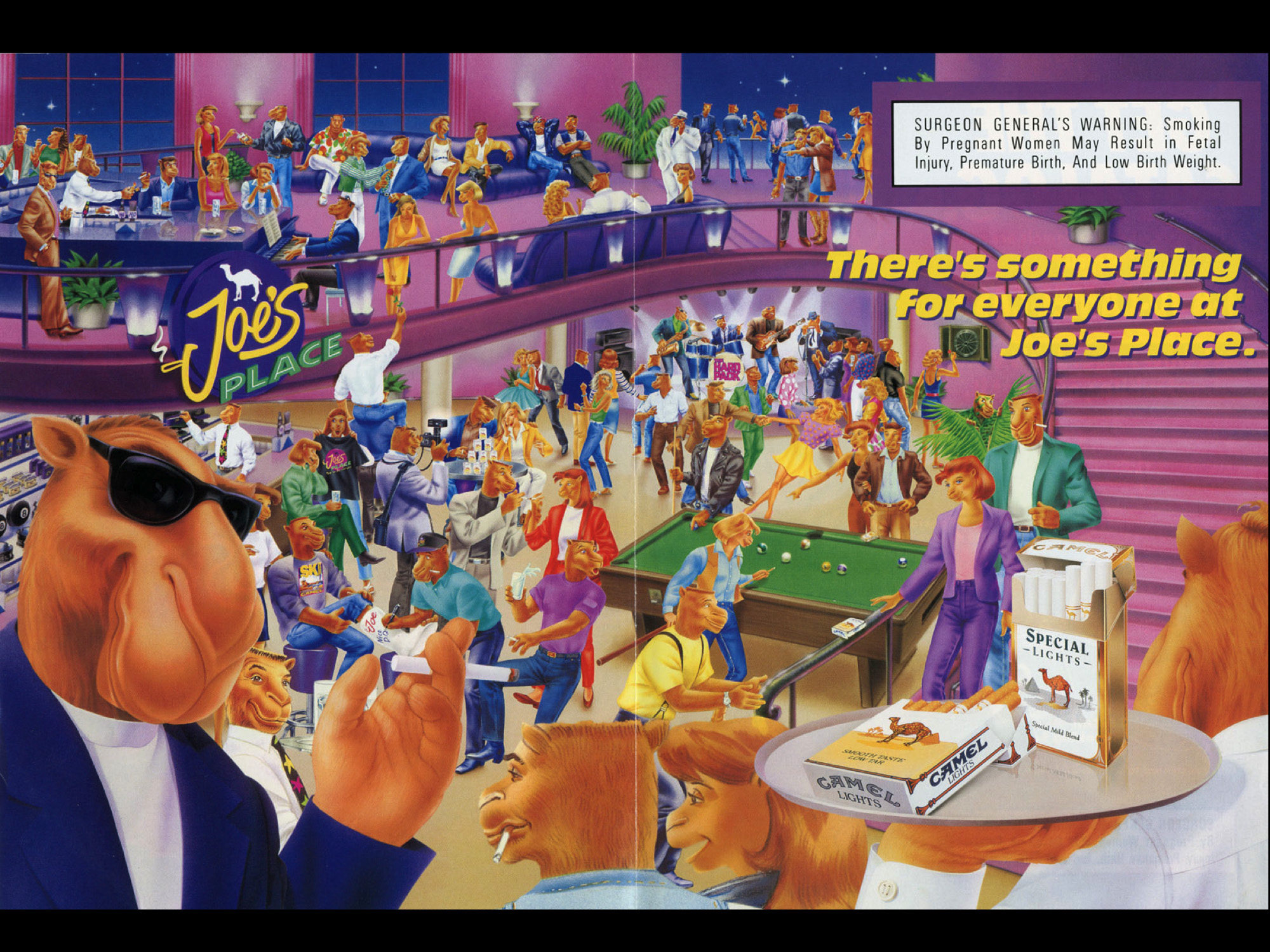
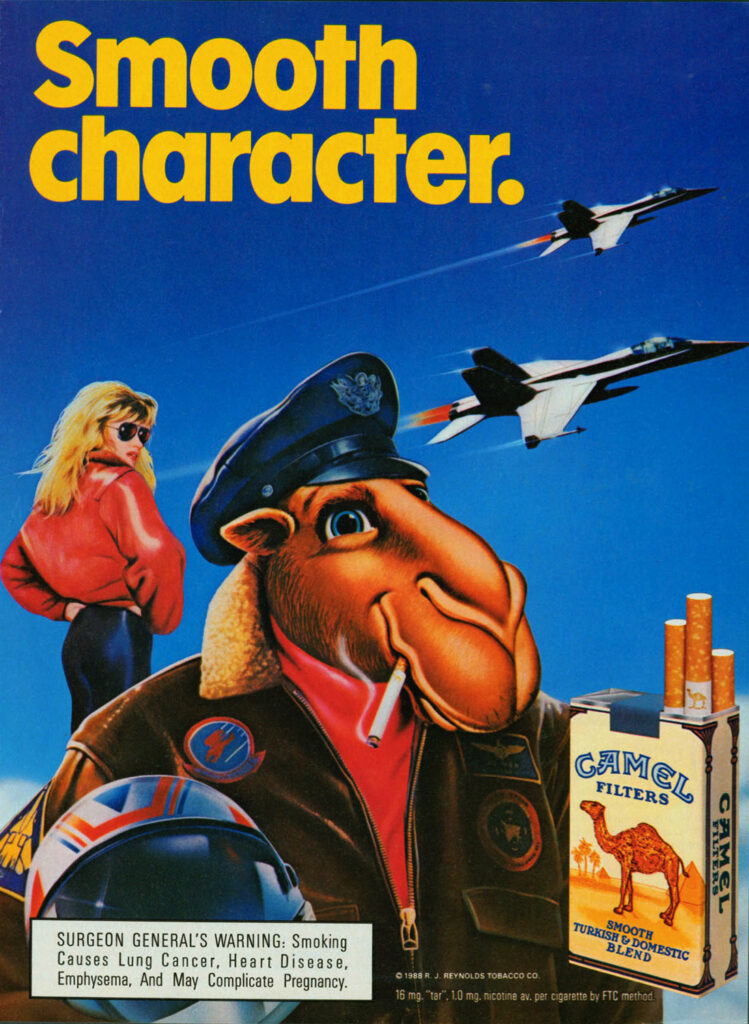
Joe Camel was the epitome of cool, always with a cigarette protruding from his phallic object-shaped head. Joe Camel dressed cool, was in cool situations, lived a cool life and the merchandise and free product giveaways caused an explosion in underage smoking [source: Campaign For Tobacco-Free Kids], with many underage teens eagerly snatching up the Joe Camel message.
RJ Reynolds was embroiled in almost constant lawsuits over its tobacco promotions and advertising. After ten years, the complaints about the campaign’s influence on teens was too much, and the Joe Camel campaign was put to rest in 1997.

This is an interesting video about the Joe Camel controversy. For a gallery of Joe Camel advertisements, click HERE.
Vantage
Vantage cigarettes didn’t use glamorous models, eye-catching graphics or gimmicks; their ads were a frank conversation about smoking and why, if you smoke, you should smoke Vantage cigarettes.
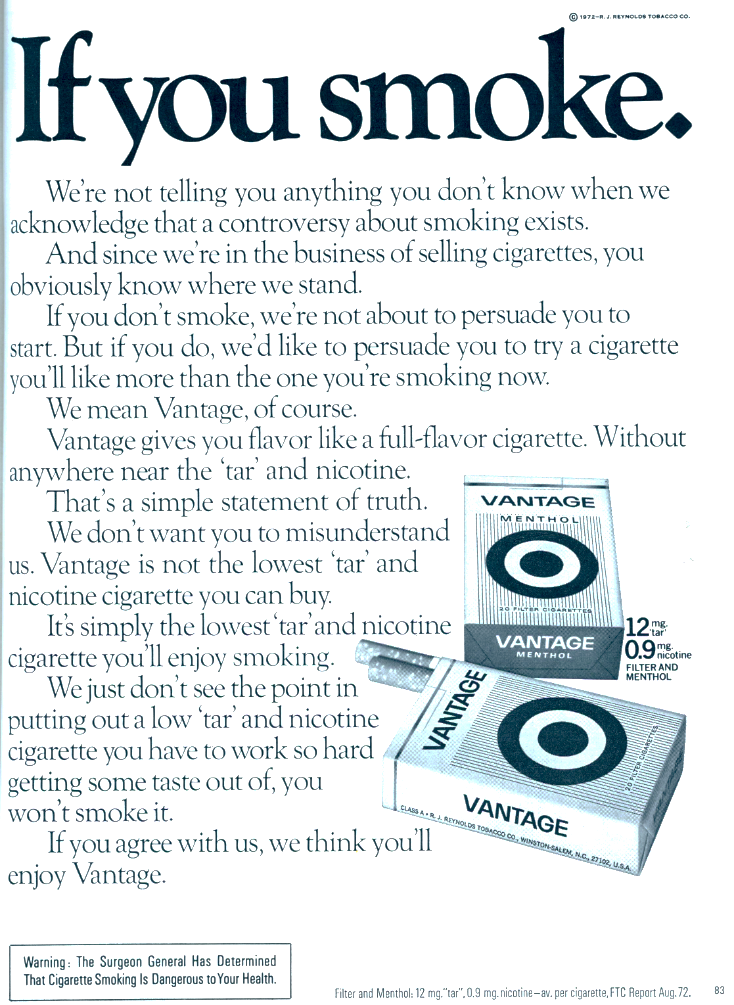
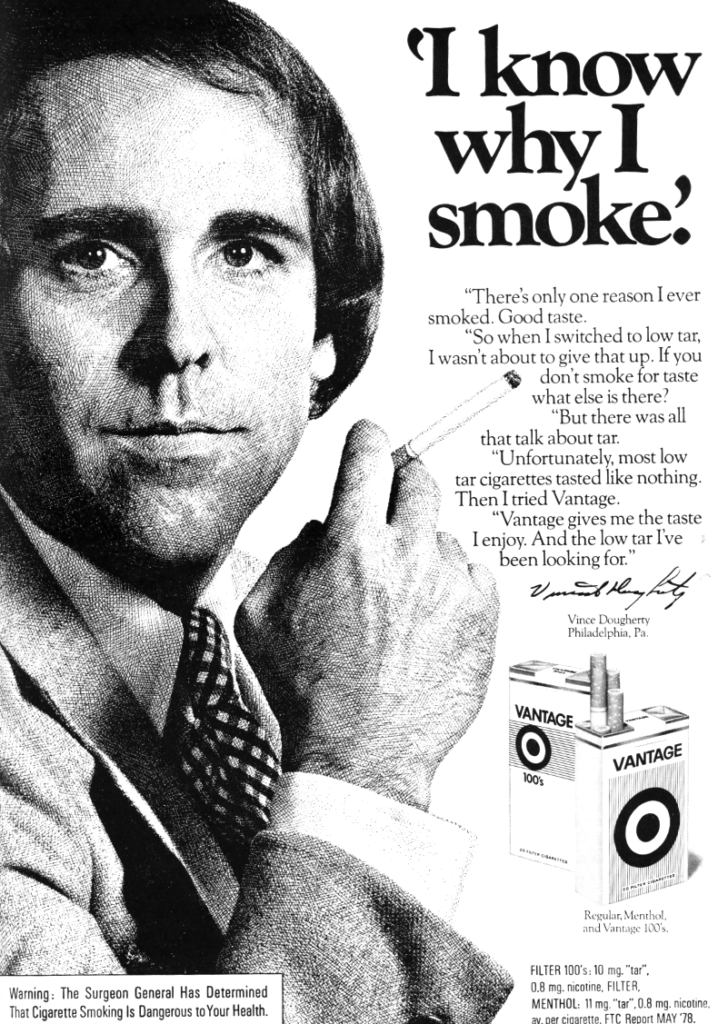
TV Celebrities Hawking Cigarettes
Television shows of the 1950s and sixties were sponsored by companies, and the stars of those shows were obligated to help sell their products in return. It seems jarring today to see TV stars we’ve come to know through reruns hawking cigarettes, but that’s the way it was back then.
The Dick Van Dyke Show Promoting Kent
The Flintstones Promoting Winston…and Busch beer
The Flintstones was a prime-time television show when it first aired, and was sponsored by Winston cigarettes
This has nothing to do with cigarettes, but I couldn’t resist including it because it is so rare: a nearly four and a half minute long Flintstones commercial for Busch beer. Fred and Barney have apparently quit their jobs to operate their own bar which sells only Busch. Drink up, kids!
The Beverly Hillbillies Promoting Winstons
For some baffling reason, The Beverly Hillbillies was a very popular TV show in the 1960s, and like The Flintstones, they were sponsored by Winston
The Joey Bishop TV Show Promotes Newport
This is a collection of early 1960s television commercials for cigarettes; The Joey Bishop Show was a sitcom that ran on NBC from 1961 to 1964. The spots promoting Newport cigarettes are kind of cringe inducing today.
What’s In A Cigarette – The Ugly Truth
Strip away the celebrity endorsements, exotic settings, wildly inaccurate claims about filters and the slick imagery, and you’re left with the ugly truth: cigarette smokers inhale a toxic witches brew of chemicals into their lungs, with enormously damaging effects.
There are approximately 600 ingredients in cigarettes. When burned, cigarettes create more than 7,000 chemicals. At least 69 of these chemicals are known to cause cancer, and many are toxic.
Many of these chemicals also are found in consumer products, but those products have warning labels, while there is no such warning for the toxins in tobacco smoke (source: NICO for life).
Here are a few of the chemicals in tobacco smoke, and other places they are found:
Acetone—found in nail polish remover
Acetic acid—an ingredient in hair dye
Ammonia—a common household cleaner
Arsenic—used in rat poison
Benzene—found in rubber cement and gasoline
Butane—used in lighter fluid
Cadmium—active component in battery acid
Carbon monoxide—released in car exhaust fumes
Formaldehyde—embalming fluid
Hexamine—found in barbecue lighter fluid
Lead—used in batteries
Naphthalene—an ingredient in mothballs
Methanol—a main component in rocket fuel
Nicotine—used as an insecticide
Tar—material for paving roads
Toluene—used to manufacture paint
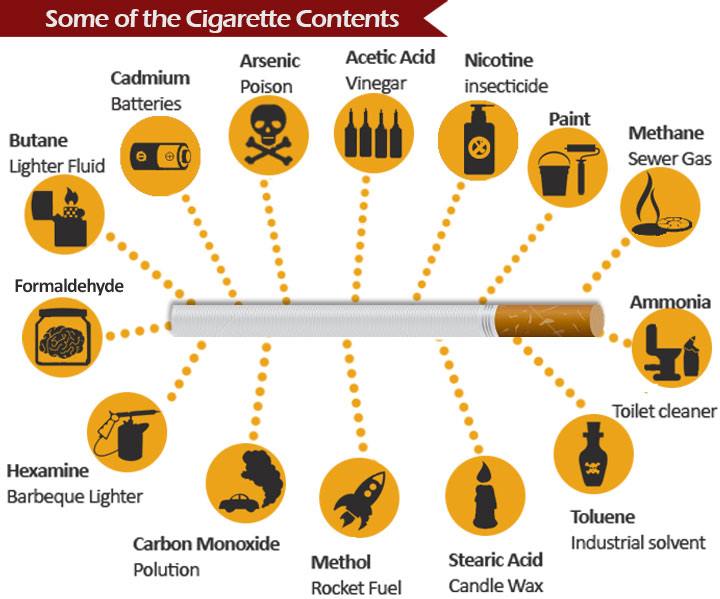
I hope you have found this post to be entertaining and interesting, and if you don’t smoke cigarettes, for the love of god don’t start. If you do smoke cigarettes, below are some resources to help you quit:
